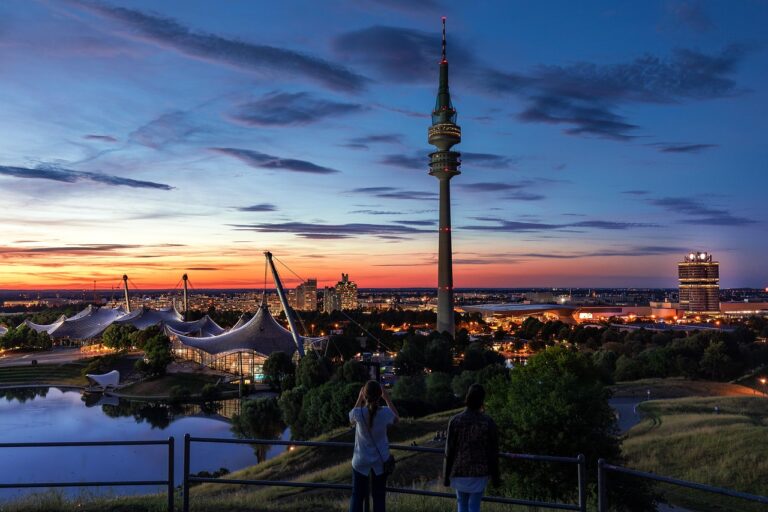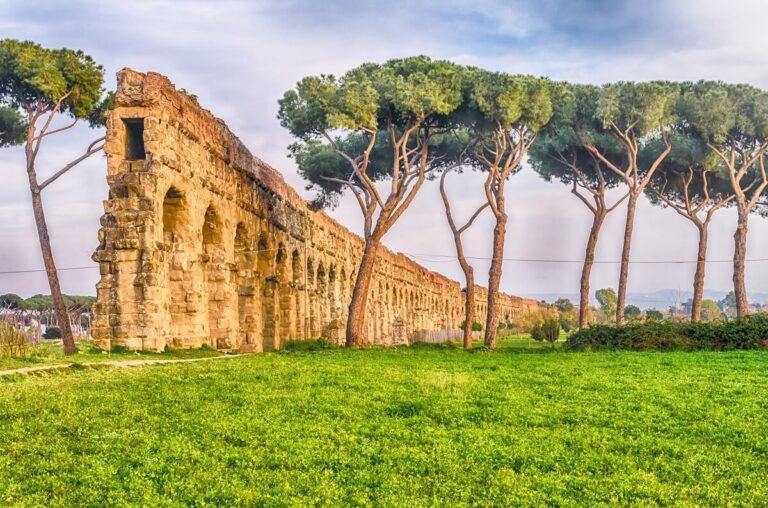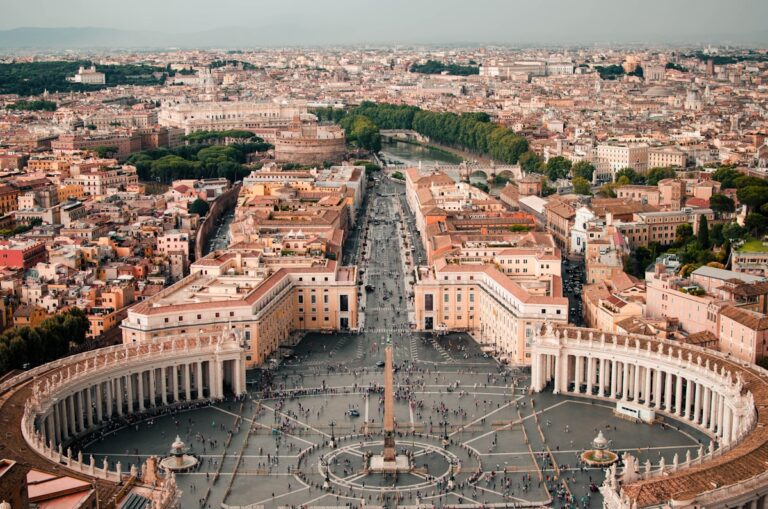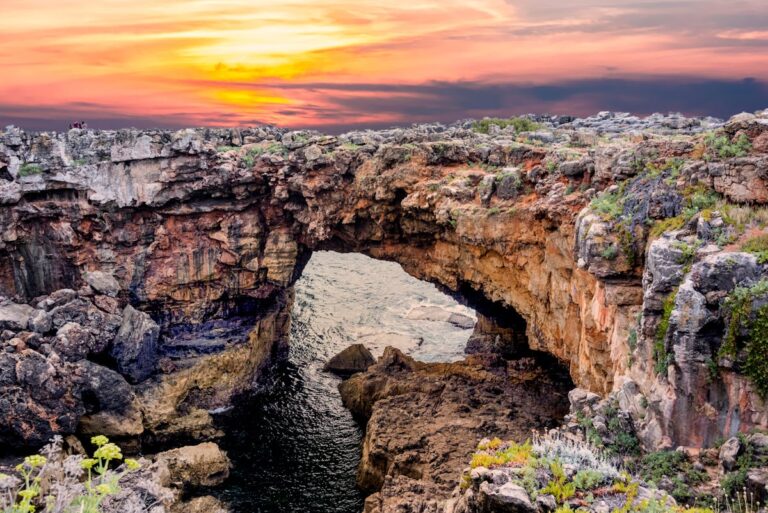10 Best Day Trips from Rome: Unforgettable Tours in Italy
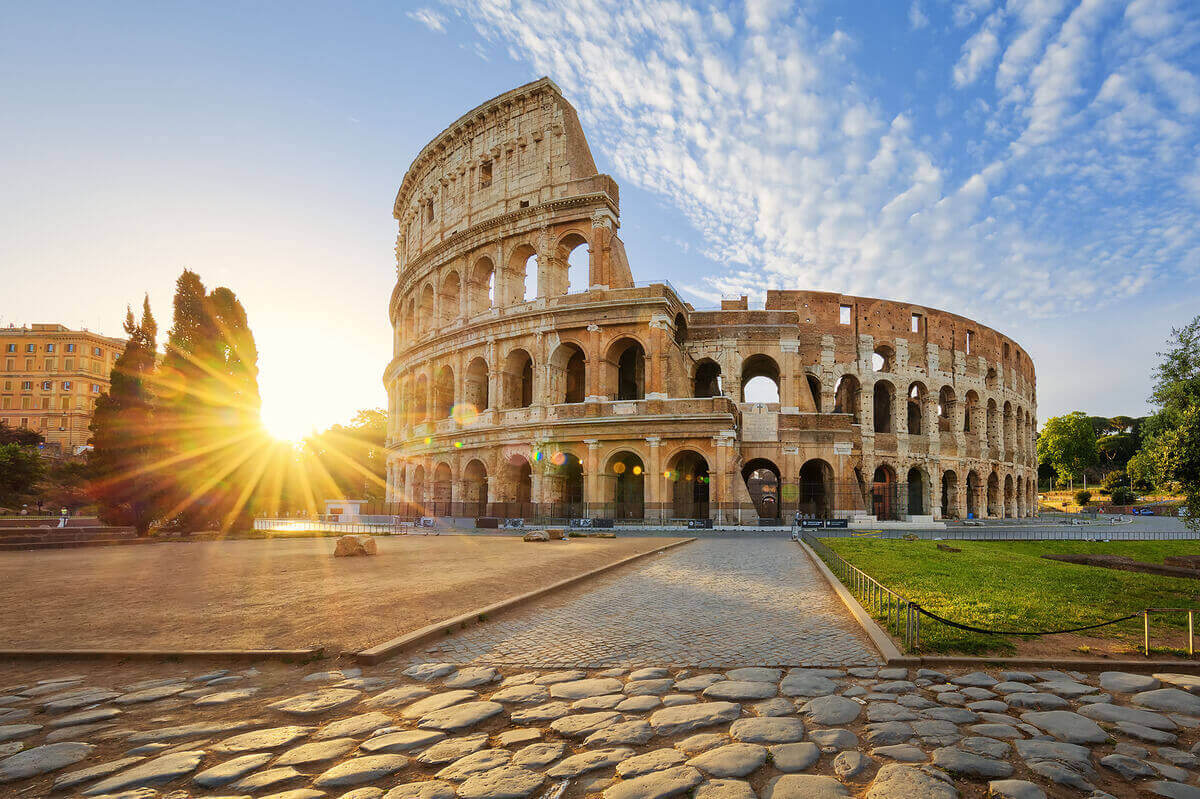
Rome’s location is super convenient for some amazing day trips from Rome, just an hour or two away!
- Why Take a Day Trip From Rome?
- Historical Sites, Scenic Countryside, and Coastal Escapes
- Best Day Trips From Rome for Culture, Nature, and Food
- Choosing Between Train Trips From Rome or Guided Tours
- Best Transportation Options for a Smooth Journey
- Tivoli: Stunning Villas and Ancient Roman Heritage
- A Short Journey to a Town Filled With History and Beauty
- Ancient and Renaissance Wonders in One Place
- Exploring Emperor Hadrian's Luxurious Roman Retreat
- Ruins, Thermal Baths, and Ancient Engineering Feats
- Majestic Fountains and Renaissance Gardens
- Frescoed Halls and Scenic Views of the Countryside
- Ostia Antica: A Well-Preserved Ancient Roman City
- One of the Best Excursions From Rome for History Enthusiasts
- Walking Through Streets That Resemble Pompeii
- The Amphitheater, Forum, and Ancient Baths
- Mosaics, Temples, and Roman Apartments Still Standing
- Florence: A Must-Visit Renaissance City
- High-Speed Train Connections Make It an Easy Day Trip
- Art, History, and Stunning Architecture in One City
- Admiring Michelangelo's David at the Accademia Gallery
- Exploring the Duomo, Ponte Vecchio, and Uffizi Gallery
- Naples: A Gateway to Southern Italy's Rich Culture
- A Lively City With Rich History, Art, and Food
- The Birthplace of Pizza and a Culinary Haven
- Walking the Historic Center and Underground Naples
- Visiting the Archaeological Museum for Pompeii Artifacts
- Pompeii: A Fascinating Look at an Ancient Roman City
- A Journey Back in Time to a Once-Thriving Roman City
- Walking Through Preserved Streets and Homes Covered in Ash
- The Forum, Villas, and Famous Frescoes
- The Casts of Victims and the Grand Amphitheater
- Castelli Romani: Wine, Lakes, and Hilltop Towns
- A Short Escape to Rolling Hills, Vineyards, and Historic Towns
- Visiting Small Towns Known for Wine and Local Cuisine
- Frascati: A Wine Lover's Paradise
- Castel Gandolfo: The Pope's Summer Residence Overlooking a Lake
- Orvieto: A Medieval Gem in Umbria
- A Hilltop Town With Medieval Charm and Stunning Views
- Quick and Convenient Train Travel From Rome
- The Duomo of Orvieto With Its Famous Mosaic Facade
- Underground Caves and the St. Patrick's Well
- Civita di Bagnoregio: The 'Dying City'
- A Tiny Village Perched on a Cliff, Accessible Only by Footbridge
- A Unique Escape to a Fairy-Tale Setting
- Walking Through the Stone Streets of the Almost-Abandoned Town
- Enjoying Spectacular Views of the Surrounding Valleys
- Sperlonga: A Seaside Escape From Rome
- A Whitewashed Coastal Town With Crystal-Clear Waters
- A Relaxing Beach Day Combined With Roman Ruins
- Swimming and Sunbathing on Sandy Shores
- Visiting the Villa of Emperor Tiberius and Its Sea Caves
- Viterbo: A Medieval Town With Thermal Baths
- A Well-Preserved Medieval Center With Historic Charm
- Famous for Its Natural Hot Springs and Papal Palace
- Walking Through the San Pellegrino Quarter
- Relaxing in the Thermal Baths Used Since Roman Times
- Choosing the Best Day Trip From Rome for Your Interests
- Pompeii, Ostia Antica, and Tivoli's Ancient Villas
- Naples, Frascati, and Orvieto's Culinary Delights
- Castelli Romani, Sperlonga, and Viterbo's Thermal Baths
- Wrapping Up: Find Your Best Day Trips from Rome
You could check out charming medieval towns like Civita di Bagnoregio, explore the UNESCO sites in Tivoli, or just chill on the sunny Mediterranean beaches in Sperlonga.
Each place is a perfect getaway from the city, with delicious food, cool cultural stuff, and beautiful scenery. From old ruins to pretty vineyards, these nearby places show you a different side of Italy, beyond just the capital.
TL;DR
Hide- Visit Tivoli to explore the stunning Villa d'Este gardens and the ancient ruins of Hadrian's Villa.
- Take a wine-tasting tour to Frascati's renowned vineyards, just 30 minutes from Rome by train.
- Discover the medieval charm of Orvieto, known for its magnificent Gothic cathedral and underground cave network.
- Explore the pristine beaches and crystal-clear waters of Santa Marinella, Rome's closest coastal retreat.
- Experience the ancient ruins and thermal baths of Ostia Antica, Rome's remarkably preserved ancient port city.
Why Take a Day Trip From Rome?
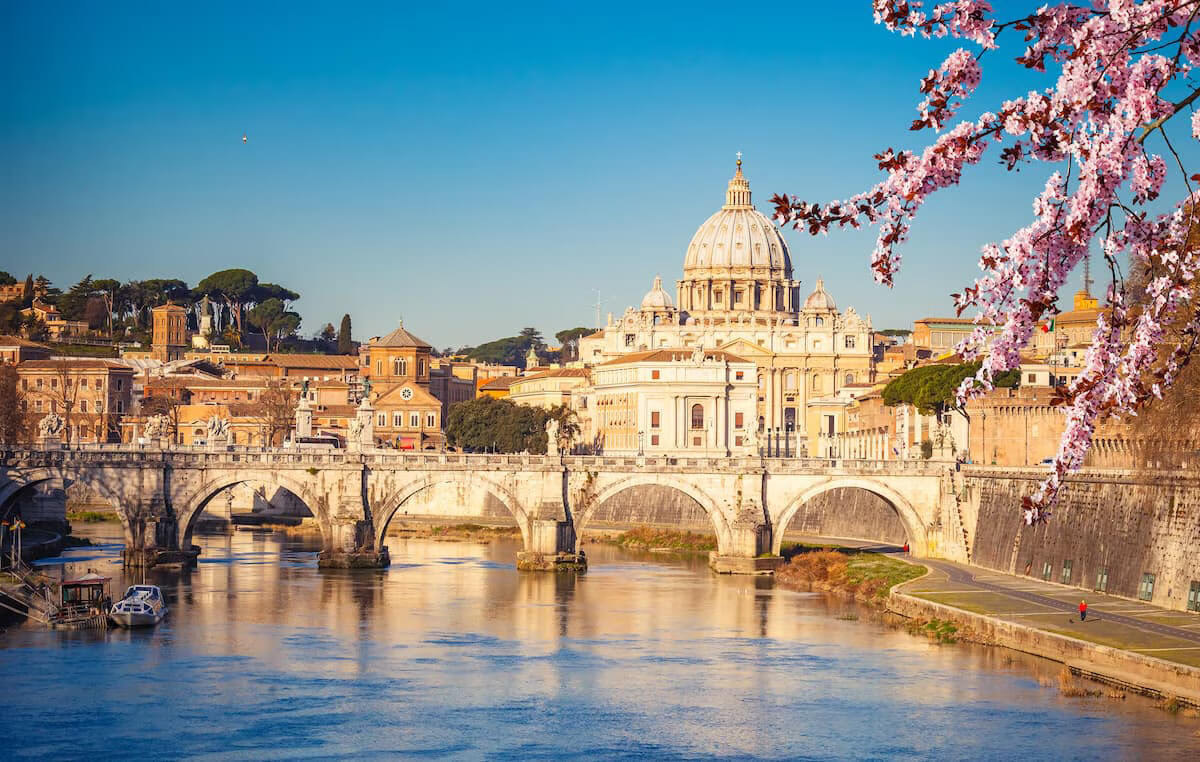
While Rome captivates visitors with its ancient ruins and lively culture, the surrounding regions of Lazio and beyond offer invigorating escapes from the bustling capital.
Taking a day trip allows travelers to discover charming medieval towns, pristine coastal areas, and serene countryside landscapes that provide a striking contrast to Rome’s urban atmosphere.
Modern rail connections and organized tours make it simple to venture beyond the city limits, with many fascinating destinations reachable within a 1-2 hour journey from Rome’s central stations.
Exploring Places Near Rome for a Change of Scenery
While Rome captivates visitors with its ancient ruins and lively urban culture, the surrounding region offers an enriching escape from the city’s bustling crowds and summer heat.
Day trips from Rome reveal a treasure trove of experiences, from UNESCO World Heritage sites and Etruscan ruins to rolling vineyards and crystal-clear Mediterranean beaches.
These nearby destinations showcase central Italy’s diverse attractions, allowing travelers to experience authentic local cuisine, medieval hill towns, and pristine natural landscapes all within easy reach of the capital.
Historical Sites, Scenic Countryside, and Coastal Escapes
Despite Rome’s endless attractions, venturing beyond the Eternal City reveals a treasure trove of historical sites, idyllic countryside retreats, and stunning coastal destinations.
These day trips from Rome offer travelers the freedom to explore ancient ruins, medieval towns, and pristine beaches.
From exclusive day tours to independent excursions, places to visit near Rome showcase Italy’s diverse landscape, rich heritage, and timeless beauty.
Best Day Trips From Rome for Culture, Nature, and Food
Although Rome captivates visitors with its ancient wonders and lively culture, taking a day trip offers invigorating perspectives and enriching experiences beyond the capital’s bustling streets.
The best day trips from Rome by train reveal charming medieval towns, pristine nature reserves, and culinary havens.
Places near Rome like Frascati’s vineyards, Tivoli’s villas, and Ostia Antica’s ruins provide authentic Italian encounters that complement any Roman holiday.
How to Plan Easy Day Trips From Rome
Planning a day trip from Rome requires choosing between independent train travel or organized guided tours, each offering distinct advantages for exploring the surrounding regions.
The extensive Italian rail network provides frequent, affordable connections to nearby destinations, while reputable tour operators handle logistics and offer expert commentary for a more structured experience.
Travelers should consider factors like their comfort level with independent travel, language abilities, and specific destination accessibility when deciding between these transportation options for venturing beyond Rome’s ancient walls.
Choosing Between Train Trips From Rome or Guided Tours
When exploring beyond Rome’s ancient walls, travelers face two main transportation choices: independent train travel or organized guided tours.
Train trips from Rome offer flexibility and cost savings for confident explorers, while guided day trip tours provide expert commentary and hassle-free logistics.
The best day trips from Rome by train serve adventurous spirits, whereas organized tours excel for those seeking easy day trips with structured itineraries.
Best Transportation Options for a Smooth Journey
Since Rome serves as a central transportation hub for Italy, travelers can easily access numerous destinations through its extensive network of trains, buses, and organized tours.
For the best day trips from Rome, high-speed trains offer convenient access to places like Florence and Naples, while local trains serve closer destinations.
Those seeking day trips out of Rome can also utilize private shuttles or join guided excursions for stress-free exploration.
Tivoli: Stunning Villas and Ancient Roman Heritage
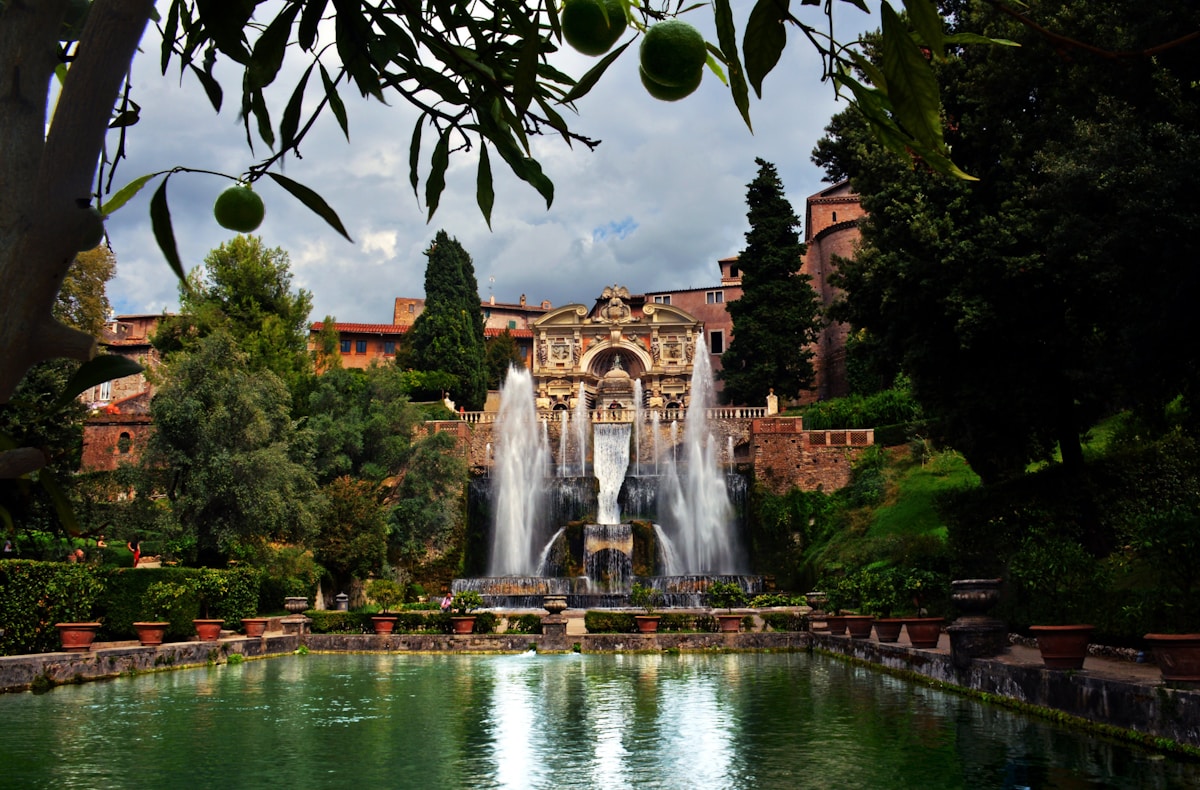
Located just 20 miles east of Rome, the historic town of Tivoli captivates visitors with its remarkable collection of UNESCO World Heritage sites and Renaissance masterpieces.
The sprawling ruins of Villa Adriana showcase Emperor Hadrian’s grand vision through its extensive archaeological complex, complete with thermal baths, theaters, and elaborate water features that transport visitors to the height of Roman opulence.
The 16th-century Villa d’Este stands as a crowning achievement of Renaissance architecture and garden design, where hundreds of fountains create a mesmerizing display amid terraced gardens and frescoed halls.
Also read our recommendations of top parks to visit in Rome.
Why Tivoli is One of the Best Day Trips From Rome
Located just 20 miles east of Rome, Tivoli offers visitors an enchanting blend of ancient Roman and Renaissance treasures within easy reach of the Eternal City.
The town’s spectacular UNESCO World Heritage sites, including Hadrian’s Villa and Villa d’Este, showcase the architectural genius and opulent lifestyles of both imperial Rome and the Renaissance period.
These magnificent villas, surrounded by cascading fountains and meticulously maintained gardens, provide an intimate glimpse into different epochs of Italian history while offering a peaceful escape from Rome’s urban intensity.
A Short Journey to a Town Filled With History and Beauty
Just 20 miles northeast of Rome lies the enchanting hillside town of Tivoli, where ancient villas, cascading gardens, and two thousand years of history create one of the most compelling day trips from the Eternal City.
Visitors can escape Rome’s urban bustle and discover:
- A scenic 30-minute train ride through the Roman countryside
- Medieval streets winding past Renaissance palazzos
- Breathtaking views of the surrounding Sabine Hills
Ancient and Renaissance Wonders in One Place
Tivoli’s greatest treasures lie in its extraordinary collection of villas, where ancient Roman opulence meets Renaissance grandeur.
Villa d’Este dazzles with its theatrical fountains and terraced Renaissance gardens, while Hadrian’s Villa showcases the mighty Roman Empire’s architectural prowess.
These UNESCO World Heritage sites offer visitors a chance to wander freely through centuries of artistic genius and imperial splendor.
Visiting Villa Adriana: A UNESCO World Heritage Site
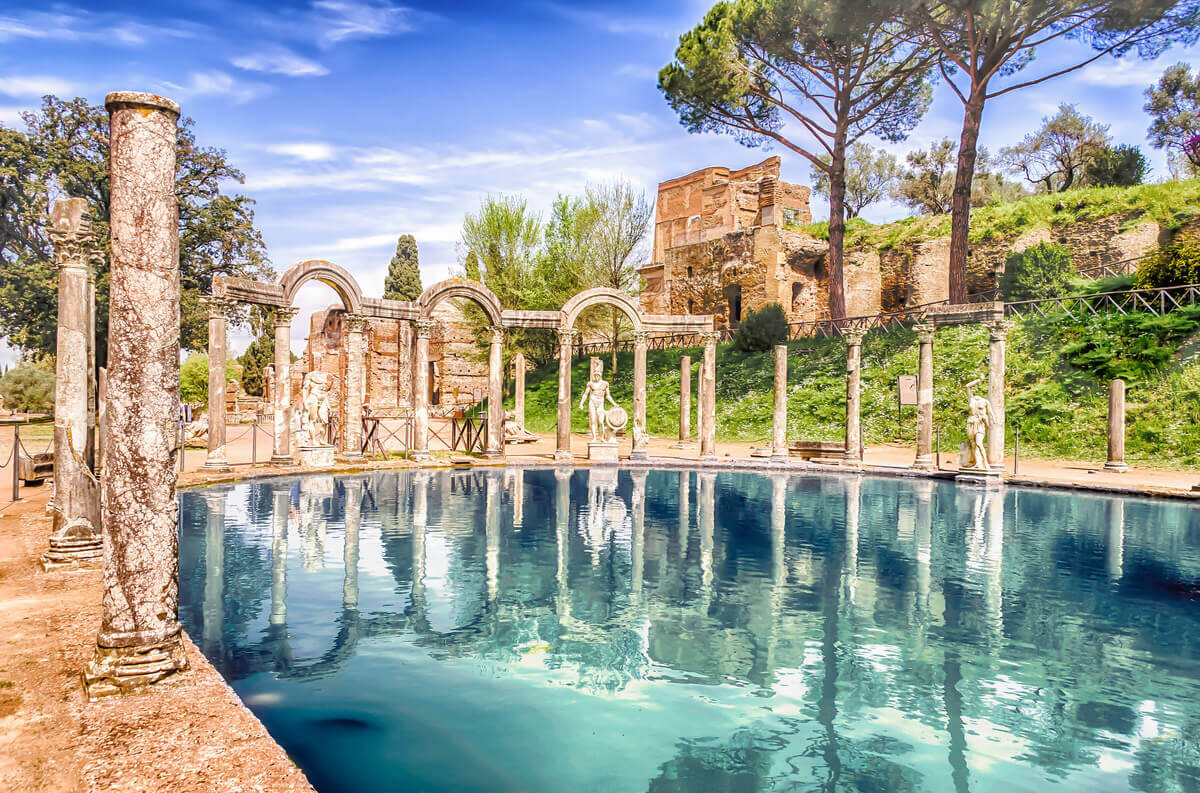
Villa Adriana stands as Emperor Hadrian‘s magnificent second-century retreat, spanning nearly 300 acres of opulent Roman architecture and engineering marvels in Tivoli.
Visitors can wander through the remarkably preserved ruins of imperial quarters, thermal baths, theaters, and ornate gardens that showcase the grandeur of ancient Roman life.
The complex exemplifies Roman architectural innovation through its network of underground service tunnels, sophisticated water systems, and the distinctive blend of Roman, Greek, and Egyptian design elements that earned its UNESCO World Heritage status.
Exploring Emperor Hadrian’s Luxurious Roman Retreat
Emperor Hadrian’s sprawling villa complex stands as one of the most remarkable archaeological treasures near Rome, showcasing the grandeur of ancient Roman architecture across 250 acres of cypress-dotted countryside.
The emperor’s private retreat features:
- A maritime theater where Hadrian conducted private meetings
- Extensive thermal baths adorned with intricate mosaics
- The Canopus, a magnificent pool lined with Greek-inspired sculptures
These architectural marvels reflect Hadrian’s passion for Greek culture and innovative design.
Ruins, Thermal Baths, and Ancient Engineering Feats
Scattered across Tivoli’s sun-drenched landscape, the remarkably preserved ruins of Villa Adriana offer visitors an unparalleled glimpse into ancient Roman engineering and architectural innovation.
The complex showcases sophisticated thermal baths, intricate water systems, and grand courtyards.
Visitors can explore the Maritime Theater, a circular pool surrounded by columns, and marvel at the dome engineering that would later inspire the Pantheon’s design.
Touring Villa d’Este: One of the Most Beautiful Places Near Rome
Villa d’Este stands as a masterpiece of Renaissance architecture and garden design, featuring over 500 spectacular fountains that create mesmerizing water displays throughout its terraced landscape.
The villa’s interior rooms showcase lively frescoes depicting classical mythology and scenes from the Este family history, while its elegant windows frame sweeping views of the Roman countryside.
Visitors can wander through the magnificent gardens, where the interplay of water features, ornate sculptures, and meticulously manicured greenery creates an enchanting atmosphere that has captivated tourists for centuries.
Majestic Fountains and Renaissance Gardens
Nestled within the enchanting grounds of Villa d’Este, an elaborate network of Renaissance fountains and meticulously manicured gardens stands as a tribute to 16th-century Italian engineering and artistic brilliance.
Among the garden’s most enchanting features:
- The Fountain of the Organ, producing melodious sounds through hydraulic mechanisms
- The Avenue of the Hundred Fountains, stretching over 130 meters
- The colossal Water Theater, with its towering central fountain reaching 14 meters high
Frescoed Halls and Scenic Views of the Countryside
The opulent interior of Villa d’Este rivals its magnificent gardens, featuring lavishly frescoed halls that transport visitors back to the height of Renaissance splendor.
From the Appartamento Vecchio’s mythological scenes to the Sala della Gloria’s stunning ceiling, each room tells a story.
The villa’s elevated position offers breathtaking vistas of the Roman countryside, with rolling hills stretching toward the eternal city.
Ostia Antica: A Well-Preserved Ancient Roman City
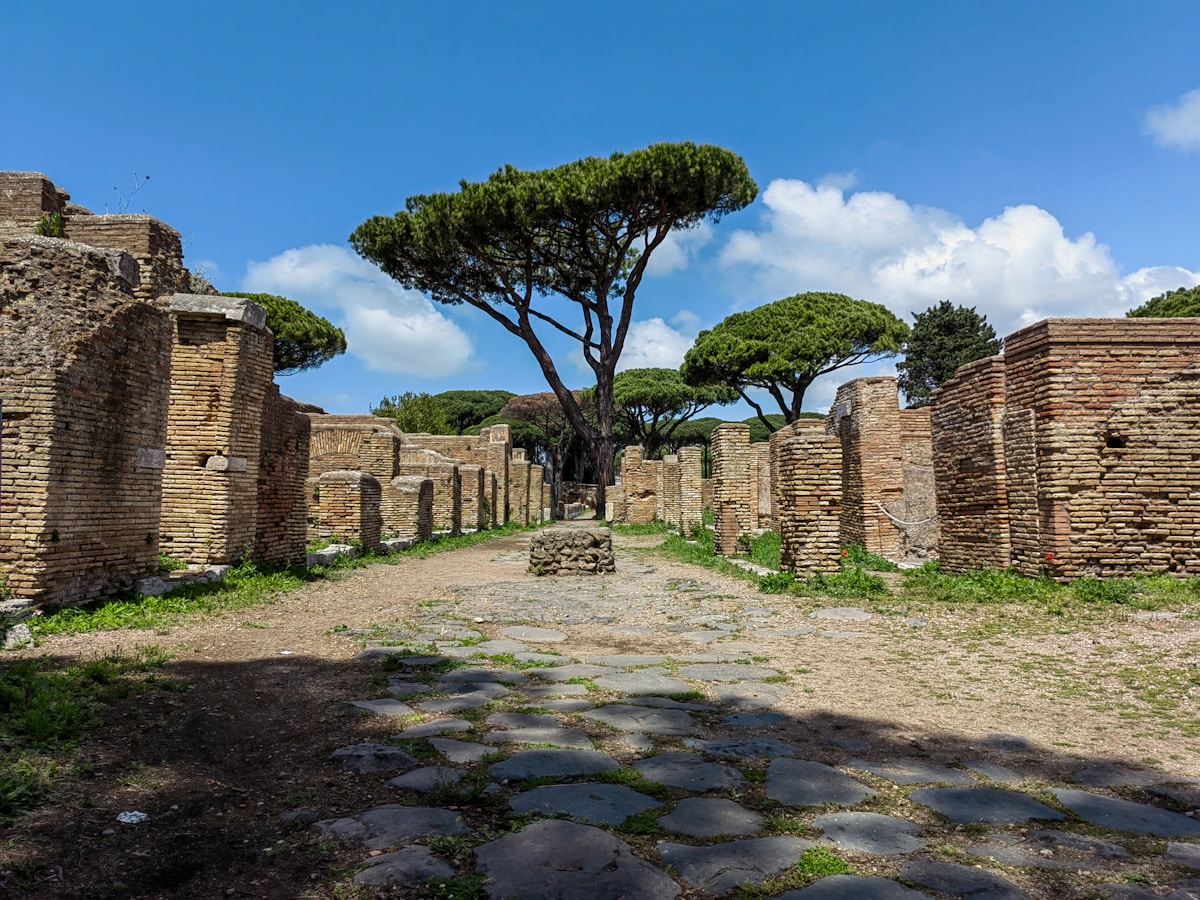
Located just 30 kilometers from Rome’s city center, Ostia Antica offers visitors a remarkable glimpse into everyday life in ancient Rome through its exceptionally preserved ruins and artifacts.
This archaeological park showcases the remains of Rome’s bustling ancient seaport, complete with intact theaters, thermal baths, residential buildings, and detailed mosaic floors that rival those of Pompeii.
The site’s accessibility, fewer crowds, and vast historical significance make it an ideal day trip destination for travelers seeking to experience authentic Roman history beyond the capital’s main attractions.
Why Ostia Antica is a Great Day Trip From Rome
Ancient Roman streets and remarkably preserved buildings make Ostia Antica a fascinating alternative to Pompeii for history enthusiasts visiting Rome.
Walking the archaeological site’s grid-like avenues reveals multi-story apartment buildings, bustling marketplaces, and intricate mosaics that paint a vivid picture of daily life in Rome’s ancient seaport.
The ruins rival Pompeii in their scope and preservation, yet Ostia Antica’s proximity to Rome – just 30 minutes by train – makes it an ideal choice for travelers seeking an immersive journey into the Roman Empire without venturing far from the capital.
One of the Best Excursions From Rome for History Enthusiasts
Standing remarkably intact after two millennia, Ostia Antica rivals Pompeii as Italy’s most fascinating ancient Roman city complex, yet it draws far fewer crowds than its Neapolitan counterpart.
History enthusiasts will discover:
- Well-preserved Roman apartments, shops, and public baths
- Ancient theater still used for summer performances
- Intricate mosaic floors depicting merchants and sea creatures
This archaeological paradise offers unrestricted exploration through its ancient streets, providing an authentic glimpse into daily Roman life.
Walking Through Streets That Resemble Pompeii
The remarkably preserved streets of Ostia Antica transport visitors back to the bustling days of the Roman Empire, with their original stone-paved paths and towering buildings echoing the urban layout found in Pompeii.
Wanderers can explore ancient apartment buildings, shops, and public baths, all while experiencing the authentic atmosphere of Rome’s ancient seaport without the overwhelming crowds of its famous counterpart.
Exploring the Highlights of Ostia Antica
The remarkably preserved ruins of Ostia Antica showcase the grandeur of ancient Roman life through its impressive structures and intricate details.
Visitors can wander through the well-preserved amphitheater, bustling forum, and elaborate bath complexes while admiring the stunning floor mosaics that have endured for two millennia.
The site’s multi-story Roman apartments, numerous temples, and public buildings paint a vivid picture of daily life in what was once Rome’s thriving port city.
The Amphitheater, Forum, and Ancient Baths
Among Ostia Antica’s most impressive ruins, three architectural marvels stand as proof of the city’s former grandeur: the remarkably preserved amphitheater, the bustling Forum, and the elaborate ancient baths.
These structural wonders offer visitors:
- The amphitheater’s intact seating area, which once hosted 4,000 spectators
- The Forum’s expansive marketplace, complete with merchant stalls and political gathering spaces
- The Terme di Nettuno’s intricate black-and-white mosaic floors depicting sea creatures
Mosaics, Temples, and Roman Apartments Still Standing
Beyond the well-known amphitheater and Forum, Ostia Antica’s most enchanting features include its exquisitely preserved mosaics, towering temple ruins, and multi-story residential buildings that paint a vivid picture of daily Roman life.
Intricate floor mosaics depict mythological scenes and merchant activities, while ancient apartment complexes rise three stories high, offering glimpses into the sophisticated urban planning of Rome’s bustling port city.
Florence: A Must-Visit Renaissance City
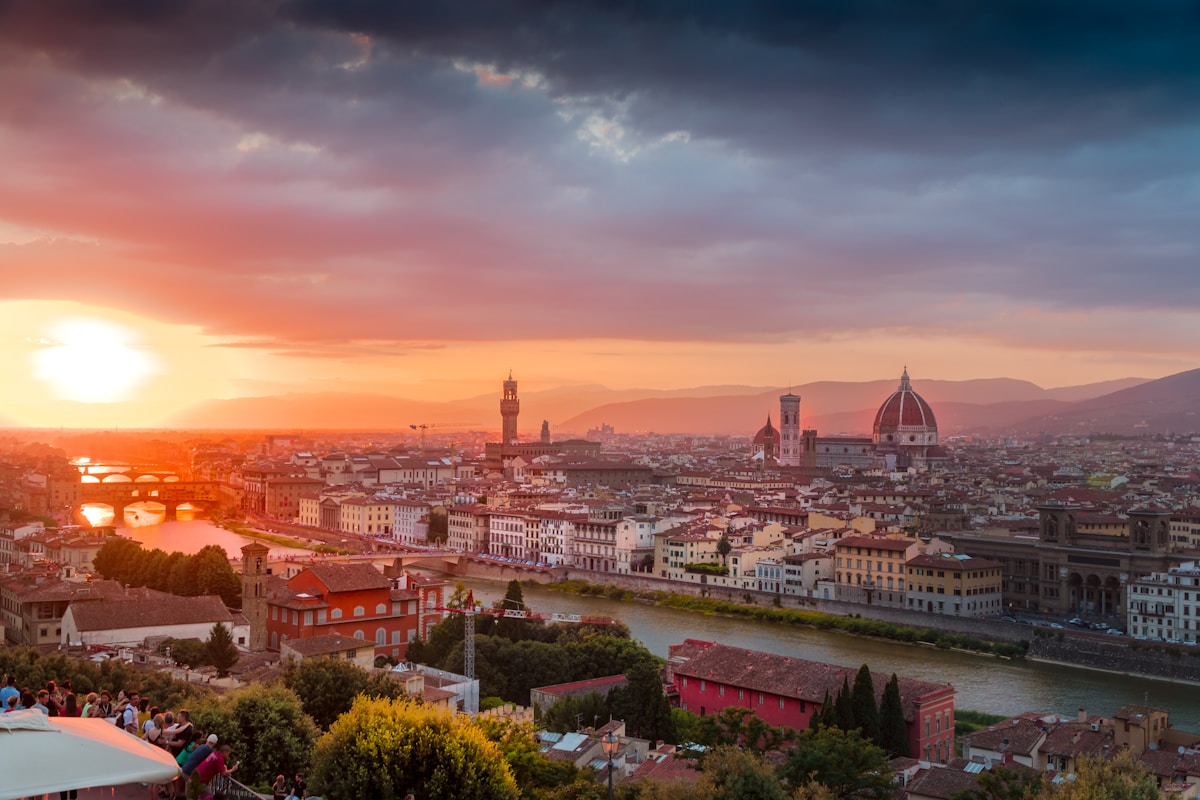
Florence, the birthplace of the Renaissance, stands as an unmissable day trip destination just 1.5 hours from Rome via high-speed train.
The magnificent Duomo cathedral, Uffizi Gallery’s masterpieces, and Michelangelo’s David at the Accademia make Florence an art lover’s paradise that can be experienced meaningfully in a single day.
Walking through the medieval streets across the iconic Ponte Vecchio bridge and savoring authentic Tuscan cuisine transforms a quick visit into an unforgettable journey through Italy’s artistic golden age.
Why Florence is One of the Best Day Trips From Rome by Train
Florence’s high-speed rail connection from Rome, with trains departing frequently and reaching the Renaissance city in just 90 minutes, makes it an ideal day trip destination.
Visitors can efficiently explore world-renowned masterpieces at the Uffizi Gallery, marvel at Brunelleschi’s iconic dome atop the Florence Cathedral, and wander through the historic Ponte Vecchio bridge all in one day.
The city’s compact historic center concentrates centuries of architectural brilliance and artistic treasures within walking distance, allowing day-trippers to experience the essence of the Italian Renaissance without feeling rushed.
High-Speed Train Connections Make It an Easy Day Trip
Thanks to Italy’s efficient high-speed rail network, travelers can zip from Rome to Florence in just 90 minutes aboard the sleek Frecciarossa or Italo trains.
These modern rail services offer:
- Frequent departures from Roma Termini to Firenze Santa Maria Novella
- Business and premium class options with complimentary refreshments
- City-center to city-center convenience, eliminating airport transfers
The reliable schedule allows visitors to maximize their time exploring Florence’s Renaissance treasures.
Art, History, and Stunning Architecture in One City
Once visitors step off the train in the heart of Tuscany’s crown jewel, they find themselves immersed in one of the world’s most concentrated collections of artistic and architectural masterpieces.
Florence’s Renaissance treasures include Michelangelo’s David at the Accademia, Botticelli’s masterpieces in the Uffizi Gallery, and Brunelleschi’s majestic Duomo dome, all within walking distance through atmospheric medieval streets.
Top Attractions to Visit on a Rome to Florence Day Trip
Florence’s most iconic attractions provide an essential glimpse into Renaissance artistry and architecture during a day trip from Rome.
Visitors can stand in awe before Michelangelo’s masterpiece David at the Accademia Gallery before exploring the magnificent Duomo cathedral complex with its distinctive terracotta dome dominating the cityscape.
The medieval Ponte Vecchio bridge, lined with historic jewelry shops, and the world-renowned Uffizi Gallery, home to Botticelli’s “Birth of Venus” and countless Renaissance masterpieces, round out the must-see landmarks.
Admiring Michelangelo’s David at the Accademia Gallery

Towering at an impressive 17 feet tall, Michelangelo’s masterpiece David stands as the crown jewel of the Accademia Gallery and one of Florence’s most iconic attractions.
This masterful marble sculpture draws visitors worldwide to witness its unparalleled detail and grandeur.
For an ideal viewing experience:
- Book skip-the-line tickets in advance
- Visit during early morning hours
- Take advantage of guided tours for expert insights
Exploring the Duomo, Ponte Vecchio, and Uffizi Gallery
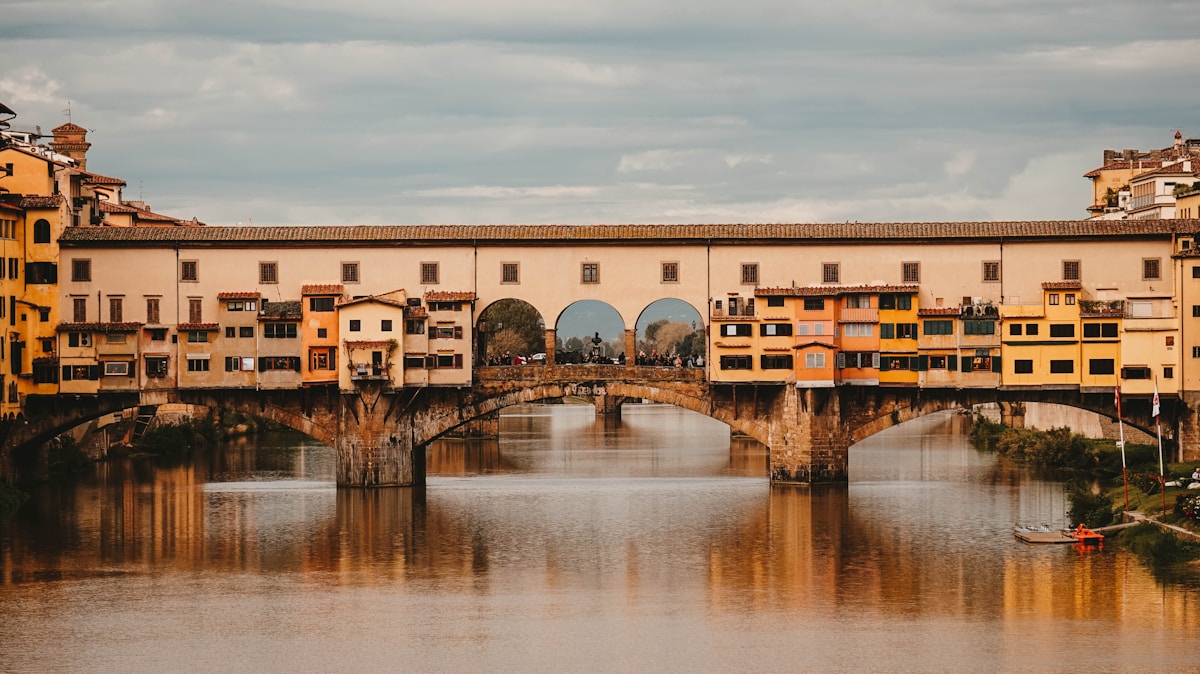
Beyond Michelangelo’s David, the heart of Florence beckons visitors with three unmissable landmarks that define the city’s Renaissance spirit.
The majestic Duomo cathedral dominates the skyline with Brunelleschi’s ingenious dome, while the medieval Ponte Vecchio bridge dazzles with its traditional goldsmiths’ shops.
Inside the renowned Uffizi Gallery, masterpieces by Botticelli, Leonardo, and other Renaissance giants await art enthusiasts.
Naples: A Gateway to Southern Italy’s Rich Culture
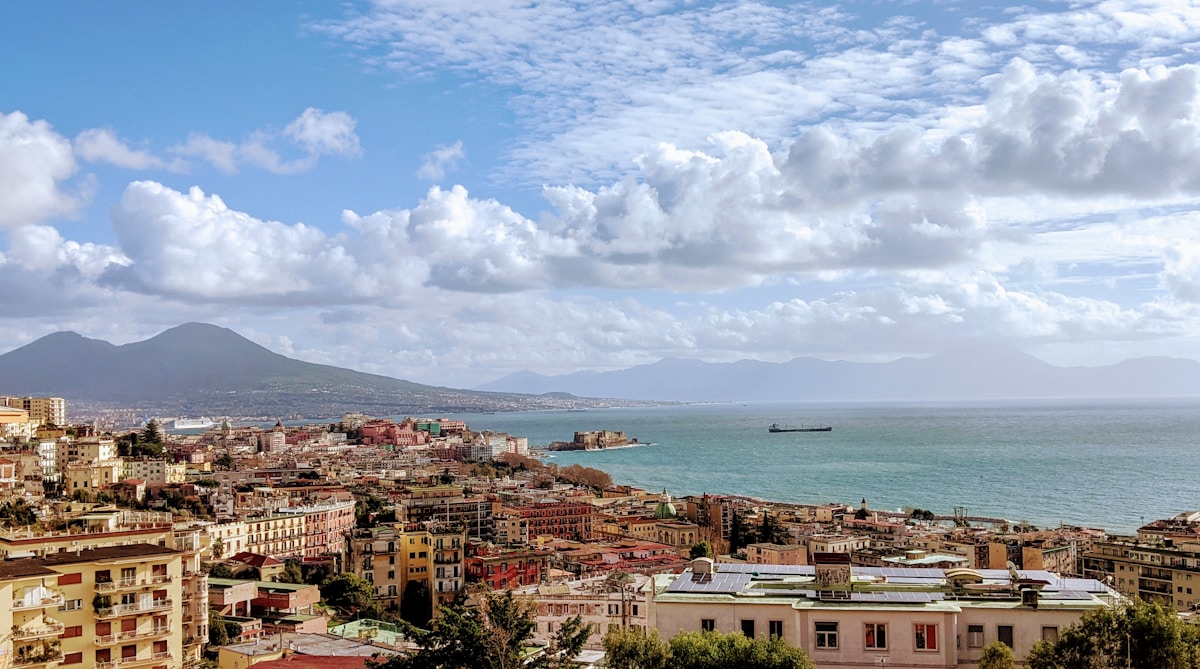
Naples, Italy’s third-largest city and a treasure trove of southern Italian culture, offers an enriching contrast to Rome’s imperial grandeur with its raw authenticity and lively street life.
Located just over an hour from Rome by high-speed train, Naples serves as an ideal gateway to experience the distinct flavors, art, and architecture of the Mezzogiorno region.
Visitors can explore the city’s historic center, a UNESCO World Heritage site, while savoring authentic Neapolitan pizza, witnessing Mount Vesuvius‘s imposing silhouette, and discovering the city’s underground network of Greek and Roman tunnels.
Rome Museums: 10 Best Museums in Rome, Italy
Discover Rome's most captivating museums, where ancient treasures and Renaissance masterpieces ... Read More
Why Naples is a Unique Day Tour From Rome
Naples stands as a lively demonstration of Southern Italy’s cultural heritage, where ancient streets burst with artistic treasures and the aroma of world-renowned cuisine.
As the birthplace of pizza, the city’s culinary scene captivates visitors with authentic Neapolitan specialties served in centuries-old establishments and bustling street markets.
The city’s dynamic energy flows through its historic center, where ornate churches, underground archaeological sites, and passionate locals create an atmosphere distinctly different from Rome’s imperial grandeur.
A Lively City With Rich History, Art, and Food
While Rome captivates visitors with its ancient grandeur, the lively metropolis of Naples beckons just over an hour away by high-speed train, offering an authentic slice of Southern Italian life.
Naples’ spirited atmosphere reveals itself through:
- UNESCO-protected historic center with baroque churches and underground ruins
- Birthplace of pizza and street food culture
- World-class archaeological museums housing Pompeii’s treasures
This raw, unfiltered city embodies Southern Italy’s soul.
The Birthplace of Pizza and a Culinary Haven
Renowned worldwide as the birthplace of modern pizza, Naples’ culinary legacy extends far beyond its most famous creation to encompass centuries of gastronomic innovation and tradition.
The city’s trattorias and street vendors serve authentic sfogliatella pastries, fresh mozzarella di bufala, and hand-crafted pasta dishes.
Each neighborhood offers distinctive flavors, from the Spanish Quarter’s seafood to Spaccanapoli’s traditional pizzerias.
Best Things to Do on a Rome to Naples Day Trip
Exploring Naples’ atmospheric historic center reveals a lively maze of narrow streets, baroque churches, and authentically chaotic Neapolitan life above ground, while the fascinating underground network of tunnels beneath offers a glimpse into the city’s ancient past.
The National Archaeological Museum houses the world’s finest collection of artifacts from nearby Pompeii and Herculaneum, including stunning frescoes, mosaics, and everyday objects that bring Roman life vividly into focus.
These two essential experiences showcase both the living pulse of modern Naples and its remarkable archaeological heritage, making them must-see stops on any day trip from Rome.
Walking the Historic Center and Underground Naples
To truly experience Naples’ soul, visitors should begin their day trip in the city’s historic center, a UNESCO World Heritage site where narrow cobblestone streets wind through centuries of architectural marvels.
The underground tunnels reveal Naples’ hidden depths, where travelers can explore:
- Ancient Roman markets
- Greek-Roman aqueducts
- WWII air-raid shelters
These subterranean passages offer a raw, unfiltered glimpse into the city’s layered history.
Visiting the Archaeological Museum for Pompeii Artifacts
The National Archaeological Museum of Naples stands as the crown jewel of Italian antiquities, housing the world’s finest collection of artifacts from Pompeii and Herculaneum.
Visitors can marvel at remarkably preserved frescoes, intricate mosaics, and the provocative Secret Cabinet collection.
The museum’s Bronze Works section showcases masterpieces like the Dancers of Villa dei Papiri, offering unparalleled insights into ancient Roman life.
Pompeii: A Fascinating Look at an Ancient Roman City
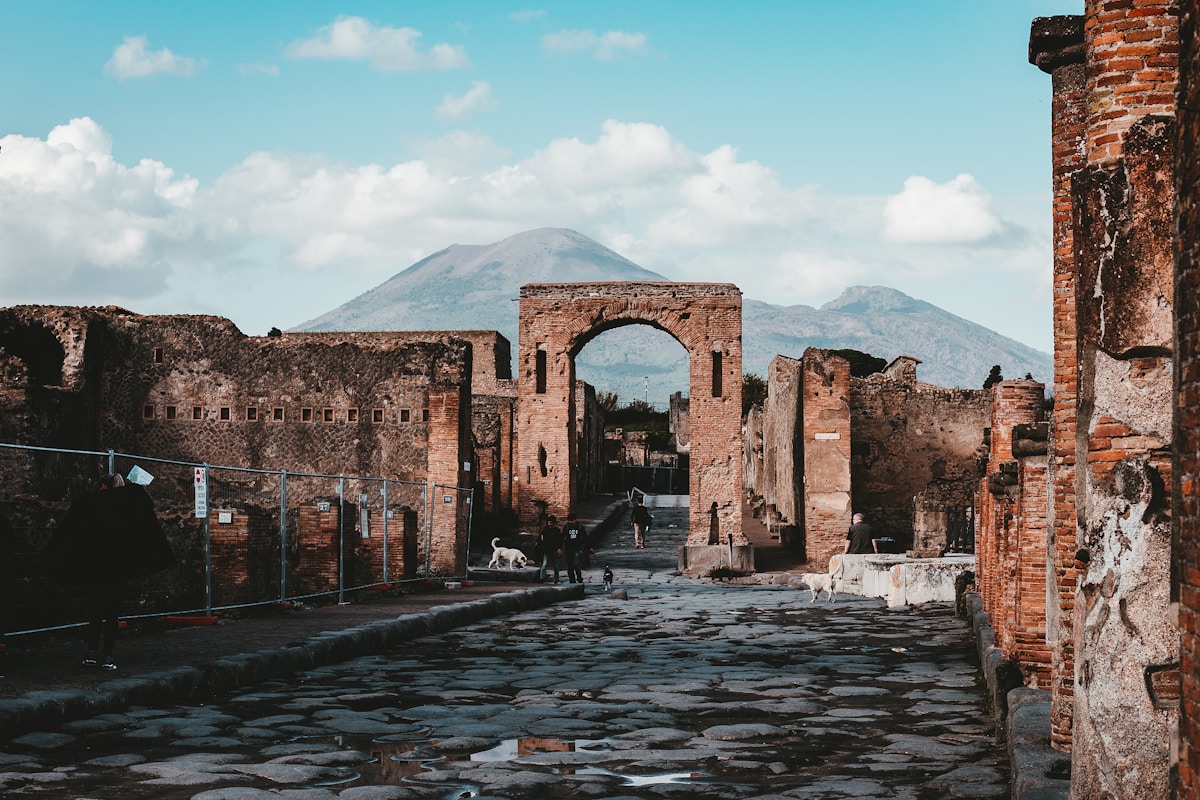
Travelers can easily reach the remarkably preserved ruins of Pompeii from Rome via a direct high-speed train to Naples, followed by a quick transfer to the archaeological site on the local Circumvesuviana line.
The ancient Roman city, frozen in time by Mount Vesuvius’s eruption in 79 AD, offers visitors an unparalleled glimpse into daily life during the height of the Roman Empire.
From the iconic Forum and Temple of Apollo to the haunting plaster casts of victims and well-preserved frescoes in the Villa of the Mysteries, Pompeii’s archaeological treasures warrant at least a full day of exploration.
Taking a Day Trip From Rome to Pompeii by Train
A visit to Pompeii transports travelers back to 79 AD, when Mount Vesuvius’s eruption preserved an entire Roman city in volcanic ash.
The remarkably intact ruins reveal intimate details of daily Roman life, from elaborate frescoes in wealthy homes to ancient fast-food counters and political graffiti etched into walls.
Walking these ancient streets, visitors can explore grand public spaces, private villas, and even observe the haunting plaster casts of citizens frozen in their final moments.
A Journey Back in Time to a Once-Thriving Roman City
Frozen in time by Mount Vesuvius’s devastating eruption in 79 AD, Pompeii stands as one of history’s most remarkable archaeological sites, offering visitors an unparalleled glimpse into daily Roman life.
Walking through its ancient streets, visitors encounter:
- Perfectly preserved frescoes adorning villa walls
- Haunting plaster casts of victims in their final moments
- Intact bakeries, temples, and bathhouses revealing Roman engineering brilliance
Walking Through Preserved Streets and Homes Covered in Ash
The remarkably preserved streets of Pompeii invite visitors to step directly onto ancient Roman roads, where deep chariot wheel ruts still mark the volcanic stone paths.
Original frescoes adorn villa walls, while household items remain frozen in time.
Guests can freely explore intimate spaces, from grand public bathhouses to private homes, offering an unparalleled glimpse into daily Roman life before Vesuvius erupted.
Must-See Highlights in Pompeii
During any visit to Pompeii’s vast archaeological site, visitors must prioritize seeing the remarkably preserved Forum, the city’s ancient commercial and religious center, along with the ornate villas adorned with colorful frescoes that offer glimpses into Roman daily life.
The haunting plaster casts of Vesuvius’ victims, frozen in their final moments, provide a sobering reminder of the catastrophic eruption that preserved this ancient city.
The imposing amphitheater, which could hold up to 20,000 spectators, stands as the oldest surviving Roman arena and exemplifies the grandeur of ancient entertainment venues.
The Forum, Villas, and Famous Frescoes
Ancient civic life comes alive at Pompeii’s expansive Forum, where visitors can explore the remarkably preserved heart of this Roman city.
Nearby, opulent villas showcase stunning frescoes that offer glimpses into Roman aristocratic life.
Key attractions include:
- Villa of the Mysteries’ enigmatic red-figured frescoes
- House of the Vettii’s expertly preserved wall paintings
- House of the Faun’s Alexander Mosaic replica
The Casts of Victims and the Grand Amphitheater
Most haunting among Pompeii’s archaeological treasures are its plaster casts of victims, frozen in their final moments when Mount Vesuvius erupted in 79 AD.
These poignant figures reveal intimate details of citizens’ final poses – some huddled together, others in defensive positions.
Nearby stands the magnificent amphitheater, Italy’s oldest surviving Roman arena, which once hosted gladiatorial spectacles for up to 20,000 spectators.
Castelli Romani: Wine, Lakes, and Hilltop Towns
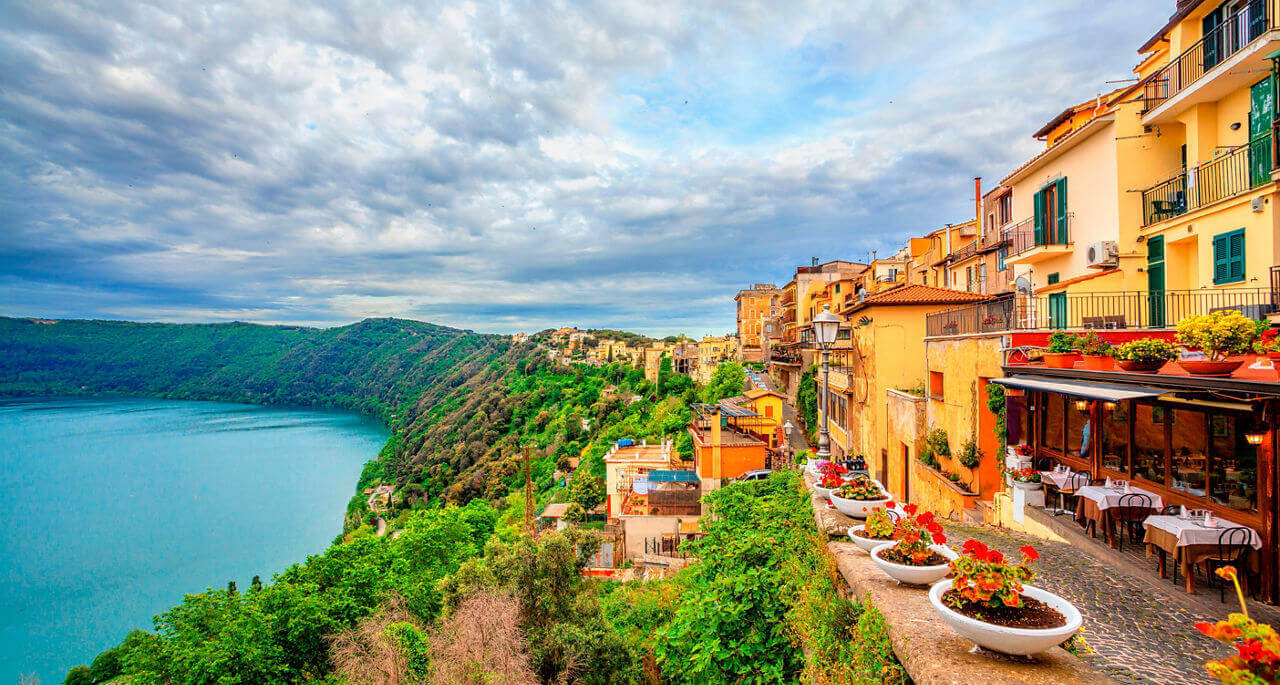
Located just 20 kilometers southeast of Rome, the Castelli Romani region beckons visitors with its constellation of medieval hilltop towns, volcanic lakes, and celebrated wine country.
This historic area, once a summer retreat for ancient Roman nobility and modern-day popes, offers a perfect escape from the capital’s urban intensity with its cool mountain air and panoramic views across the Roman countryside.
The region’s crown jewels include the papal summer residence of Castel Gandolfo, the wine-producing town of Frascati with its renowned white wines, and the pristine Lake Albano, making Castelli Romani an essential day trip for both history enthusiasts and food and wine lovers.
Why Castelli Romani is One of the Best Day Trips Out of Rome
The Castelli Romani region, nestled in the rolling Alban Hills just outside Rome, offers visitors a perfect escape into a landscape of ancient vineyards and historic hilltop towns.
This collection of 13 picturesque communes showcases the authentic flavors of Lazio through its renowned Frascati wine, traditional porchetta, and rustic trattorias serving time-honored Roman recipes.
Against the backdrop of volcanic lakes and aristocratic villas, travelers can experience the slower-paced lifestyle of Roman wine country while remaining just a short train ride from the capital.
A Short Escape to Rolling Hills, Vineyards, and Historic Towns
Just a short journey southeast of Rome lies the enchanting Castelli Romani region, where ancient volcanic hills cradle a collection of picturesque medieval towns, crystalline lakes, and celebrated vineyards.
Visitors seeking escape from urban life can discover:
- Frascati’s renowned white wine estates offering tastings and cellar tours
- Castel Gandolfo’s papal palace overlooking Lake Albano
- Ariccia’s baroque architecture and traditional fraschette restaurants
This verdant countryside retreat promises authentic Italian experiences away from tourist crowds.
Visiting Small Towns Known for Wine and Local Cuisine
Nestled among the Alban Hills, Castelli Romani‘s charming towns offer food and wine enthusiasts an authentic taste of regional specialties, from crisp Frascati whites to hearty porchetta.
Local trattorias in Frascati and Marino serve traditional dishes like roasted lamb and wild mushroom pasta, while historic wine cellars welcome visitors for tastings.
Ariccia’s bustling fraschette showcase the area’s renowned cured meats.
Top Places to Visit in Castelli Romani
Frascati stands out as a premier destination in Castelli Romani, where visitors can sample acclaimed local wines in historic cantinas nestled along cobblestone streets.
The elegant papal retreat of Castel Gandolfo perches dramatically above Lake Albano, offering spectacular views across the volcanic crater lake.
These two jewels of the region exemplify the area’s reputation for fine wine production and architectural grandeur, with Frascati’s vintages and Castel Gandolfo’s papal apartments drawing visitors year-round.
Frascati: A Wine Lover’s Paradise
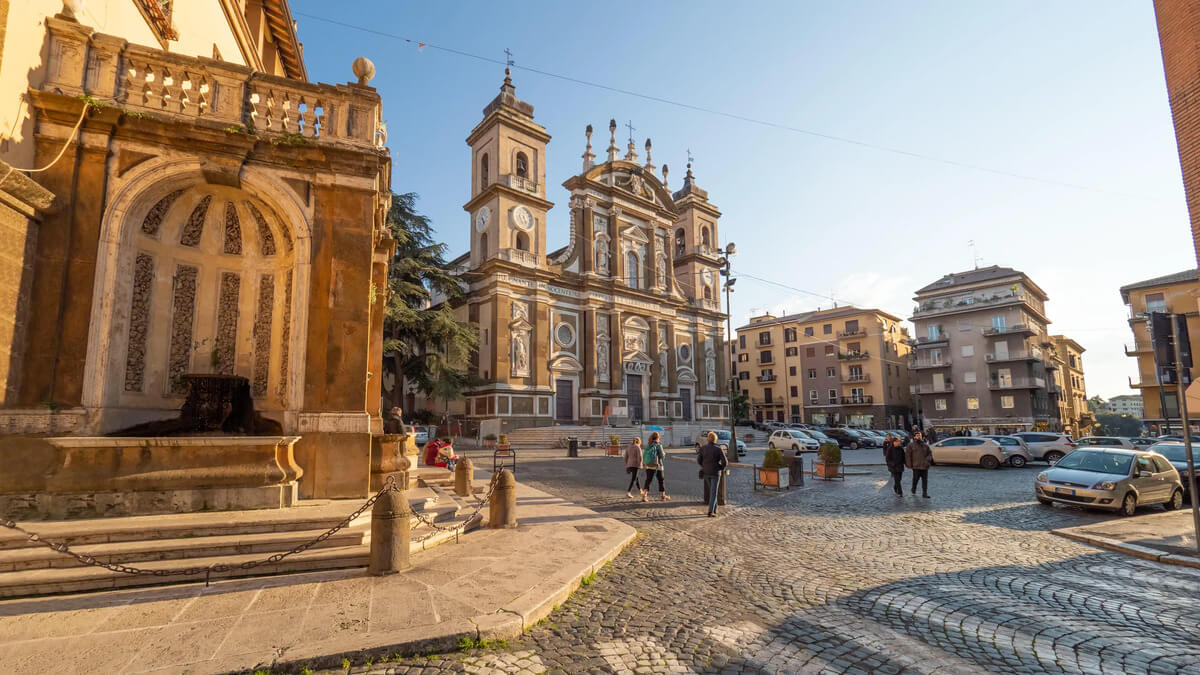
Condé Nast Traveler
The ancient hilltop town of Frascati, a mere 13 miles southeast of Rome, captivates visitors with its world-renowned white wines and aristocratic villas.
Wine enthusiasts can explore:
- Historic family-run wineries offering DOC-certified Frascati Superiore
- Underground wine cellars carved into volcanic rock
- Villa Aldobrandini’s terraced vineyards with panoramic views
Centuries-old enotecas serve local vintages alongside traditional porchetta and regional specialties.
Castel Gandolfo: The Pope’s Summer Residence Overlooking a Lake
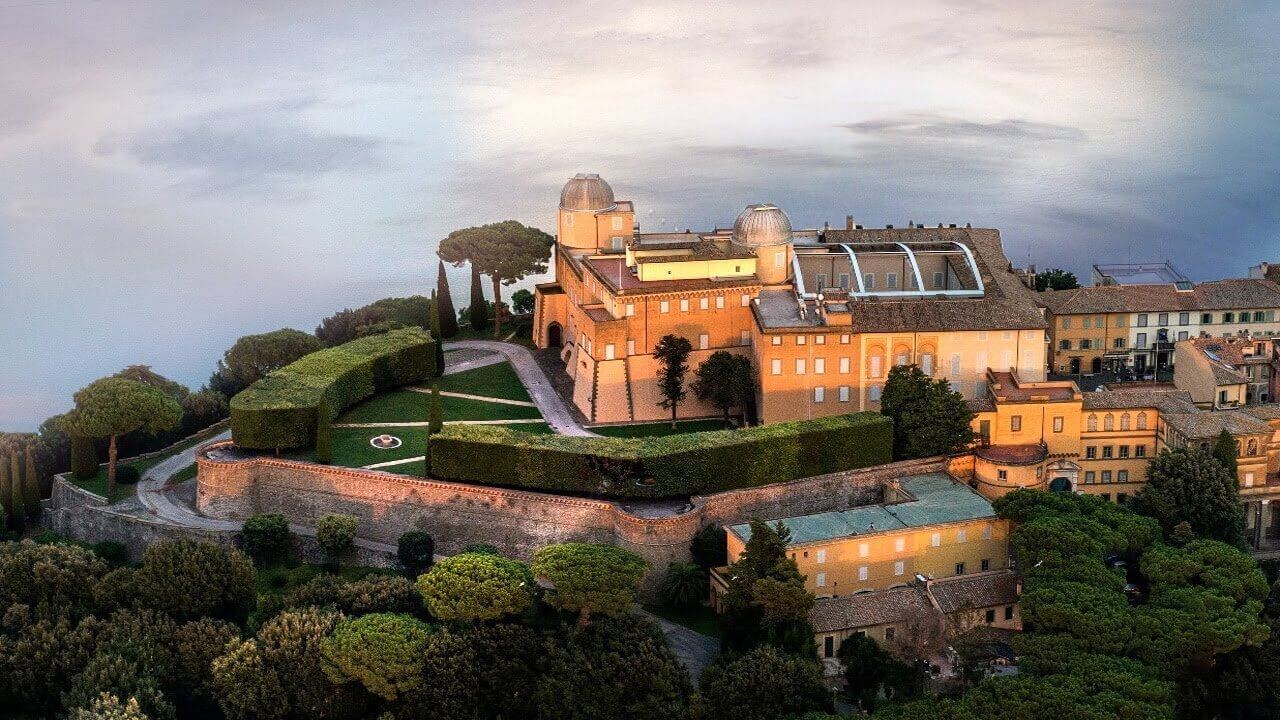
Perched majestically above volcanic Lake Albano, Castel Gandolfo stands as one of Italy’s most enchanting hilltop towns and the prestigious summer retreat of popes since the 17th century.
Visitors can explore the Apostolic Palace‘s recently opened museum, stroll through the meticulously manicured Barberini Gardens, and savor authentic local cuisine at lakeside restaurants while absorbing breathtaking views of the crystalline waters below.
Orvieto: A Medieval Gem in Umbria
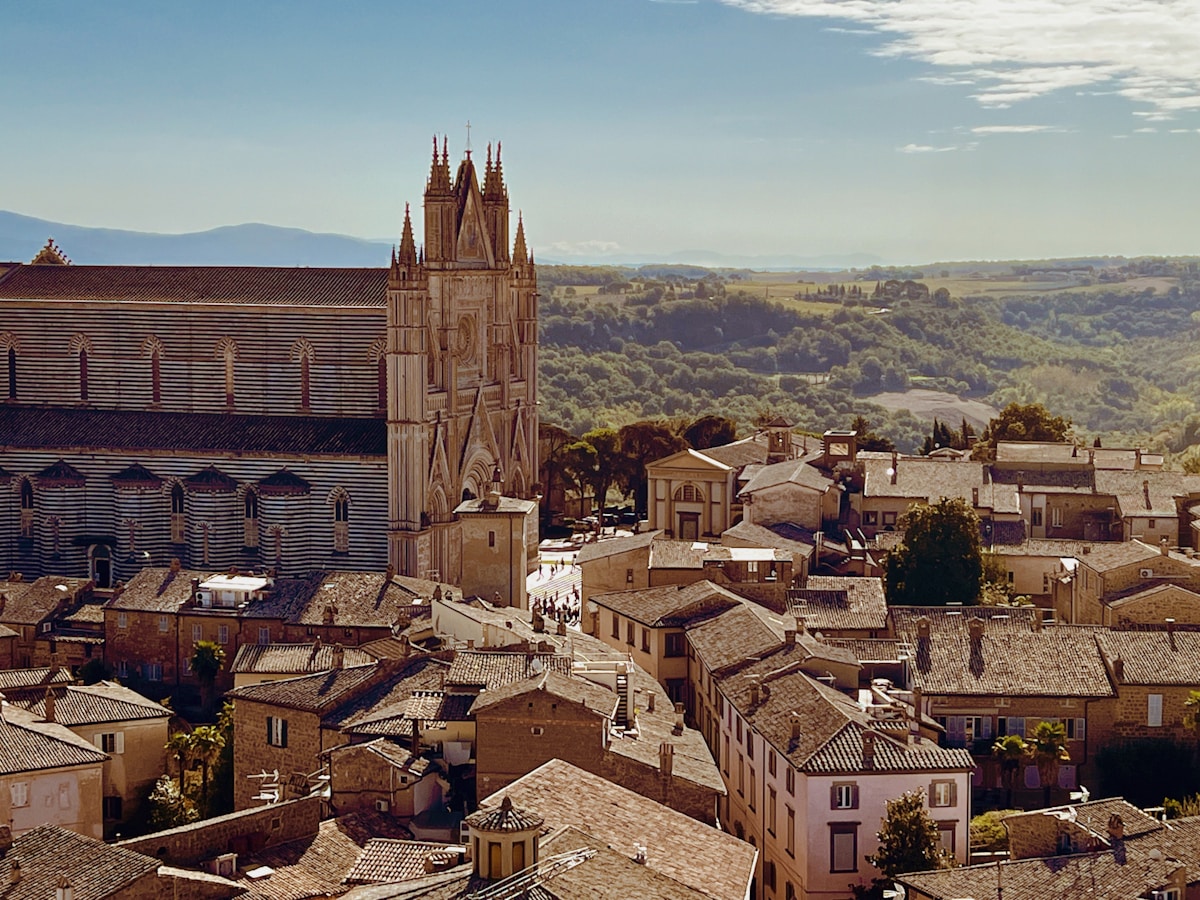
Perched dramatically on a volcanic plateau just an hour from Rome by train, Orvieto stands as one of Umbria’s most striking medieval towns.
The town’s majestic Gothic cathedral, with its mesmerizing facade of golden mosaics and intricate sculptures, serves as the crown jewel among Orvieto’s remarkable attractions.
Visitors can explore the town’s mysterious underground network of Etruscan caves, stroll through charming cobblestone streets lined with artisan workshops, and savor renowned Orvieto Classico wines in historic cellars carved into volcanic rock.
Why Orvieto is One of the Best Day Trips From Rome by Train
Perched dramatically atop volcanic cliffs, the medieval town of Orvieto offers visitors breathtaking panoramic views across the Umbrian countryside and easy access via a 75-minute train journey from Rome’s Termini station.
The well-preserved historic center showcases stunning Gothic architecture, winding cobblestone streets, and the magnificent Duomo cathedral with its intricate facade and frescoes.
Travelers can seamlessly explore this authentic Italian hilltop destination as a day trip, with frequent trains departing Rome throughout the day and a convenient funicular that whisks visitors from the station to the historic center above.
A Hilltop Town With Medieval Charm and Stunning Views
Rising dramatically from the Umbrian countryside atop a massive volcanic plateau, Orvieto stands as one of Italy’s most striking medieval towns.
Its labyrinth of cobblestone streets reveals centuries-old architecture and timeless beauty.
This breathtaking hilltop sanctuary offers:
- Panoramic vistas stretching across Umbria’s rolling hills
- Well-preserved medieval walls and towers
- Hidden passageways carved into volcanic rock
Quick and Convenient Train Travel From Rome
Just over an hour from Rome’s Termini Station, Orvieto makes an ideal day trip destination with frequent direct trains running throughout the day.
Trains depart every two hours between 6 AM and 9 PM, costing around €15 each way.
The modern funicular whisks visitors from the train station to the historic center in just 2 minutes, making the journey effortless and scenic.
Best Things to See in Orvieto
Orvieto’s architectural crown jewel is its magnificent Duomo, featuring one of Italy’s most striking Gothic facades adorned with intricate golden mosaics and dramatic religious scenes.
The city’s fascinating network of underground caves and tunnels, carved from volcanic rock over millennia, reveals ancient Etruscan wells and medieval workshops.
The engineering marvel of St. Patrick’s Well, with its double-helix staircase design, descends 175 feet into the earth and stands as a symbol of Renaissance ingenuity.
The Duomo of Orvieto With Its Famous Mosaic Facade
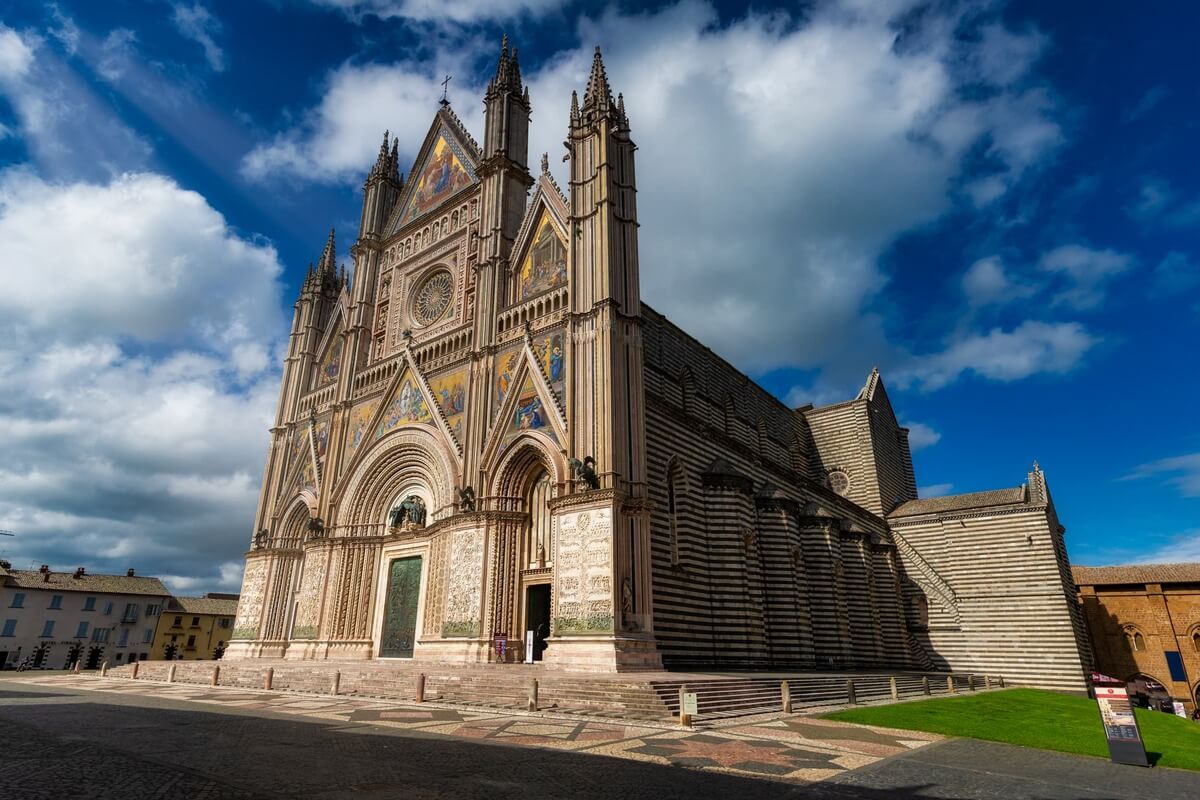
Magnificence reaches its pinnacle at Orvieto’s stunning Duomo, a masterpiece of Italian Gothic architecture that has captivated visitors since the 14th century.
Its dazzling mosaic facade gleams with biblical scenes and intricate golden details.
Key features that make this cathedral extraordinary:
- Lorenzo Maitani’s relief sculptures depicting Creation to Last Judgment
- Spectacular rose window designed by Orcagna
- San Brizio Chapel’s frescoes by Fra Angelico and Signorelli
Underground Caves and the St. Patrick’s Well
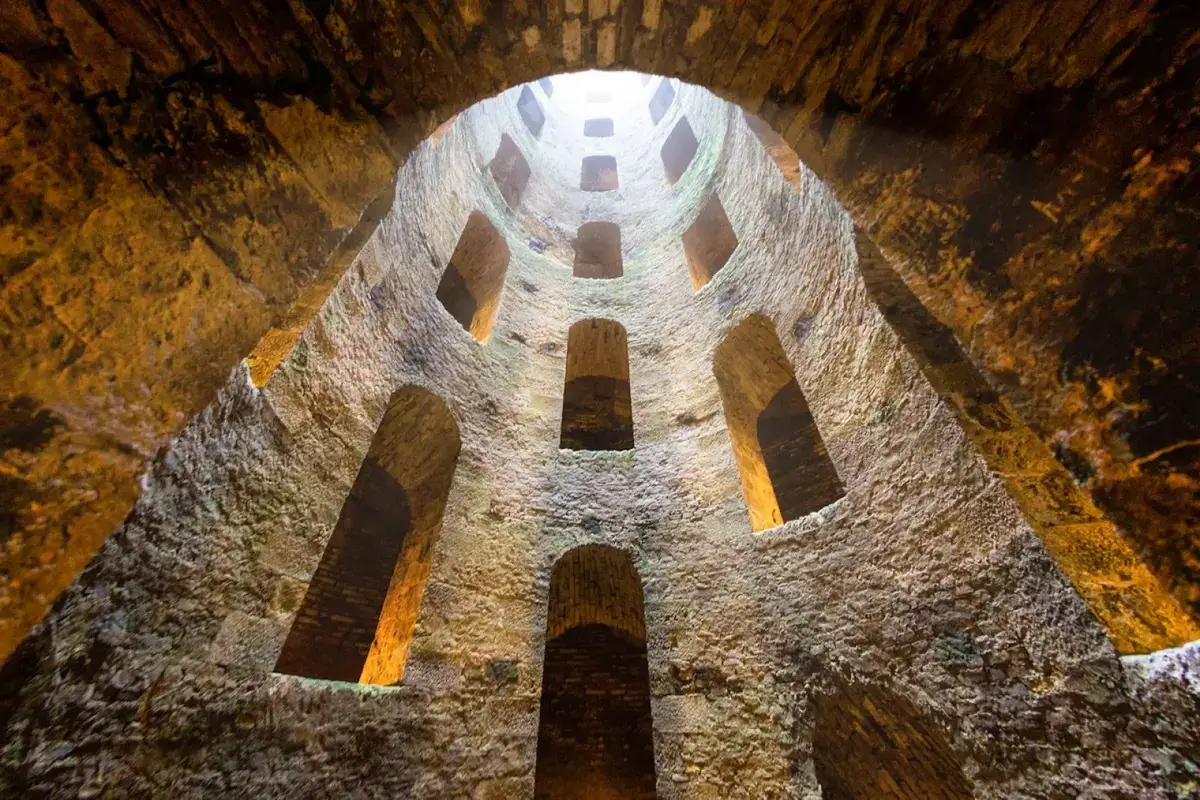
Beneath the medieval streets of Orvieto lies a fascinating subterranean world of Etruscan-era caves and tunnels, crowned by the engineering marvel of St. Patrick’s Well.
This 16th-century well plunges 175 feet deep, featuring a double-helix staircase design that allowed mules to transport water without crossing paths.
The underground network includes over 1,200 caves, ancient olive presses, and escape routes.
Civita di Bagnoregio: The ‘Dying City’
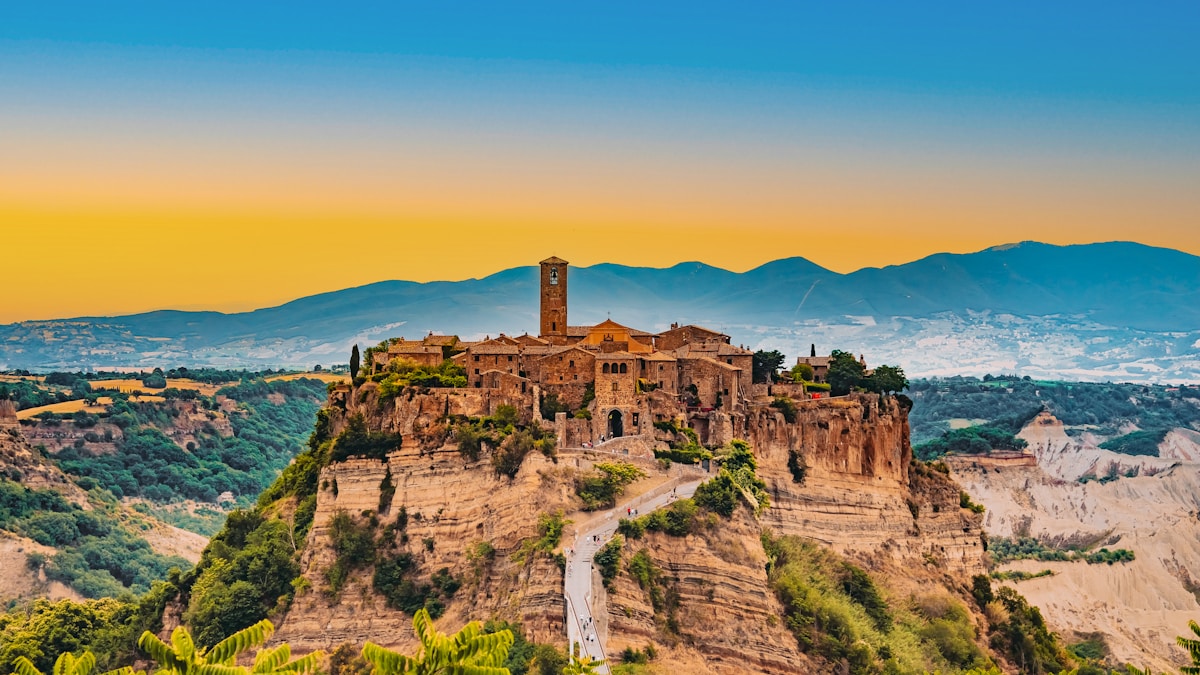
Perched dramatically atop a plateau of volcanic rock, Civita di Bagnoregio captivates visitors with its otherworldly appearance and precarious position, earning its nickname “the dying city” due to ongoing erosion of its foundations.
This remarkable medieval town, accessible only by a long footbridge suspended above a vast canyon, offers an extraordinary glimpse into Italy’s past with its ancient stone houses, flowering window boxes, and winding cobblestone streets.
Beyond its striking architecture and dramatic setting, Civita rewards travelers with breathtaking views of the surrounding Lazio countryside and an authentically preserved slice of Italian village life that seems frozen in time.
Why Civita di Bagnoregio is a Must-See Day Trip From Rome
Perched dramatically atop a plateau of volcanic rock, the ancient village of Civita di Bagnoregio appears to float above the surrounding valleys like a medieval mirage.
This remarkable “dying city,” nicknamed for its slowly eroding foundations, can only be reached via a 300-meter footbridge that spans the chasm between the mainland and the village’s stone gates.
Within its weathered walls, visitors discover a preserved slice of Italian history, complete with centuries-old architecture, winding cobblestone paths, and sweeping views of the Lazio countryside that make this precarious settlement an unforgettable escape from Rome’s urban bustle.
A Tiny Village Perched on a Cliff, Accessible Only by Footbridge
The ancient settlement of Civita di Bagnoregio rises dramatically from a plateau of volcanic rock, standing as one of Italy’s most spectacular hidden treasures.
The village’s sole connection to the modern world is a 300-meter footbridge spanning the abyss.
Visitors experience:
- Complete isolation from modern civilization
- Panoramic views of the Valle dei Calanchi
- Ancient Etruscan architecture untouched by time
A Unique Escape to a Fairy-Tale Setting
Known as “The Dying City,” Civita di Bagnoregio beckons visitors into a domain where time seems suspended between earth and sky.
This ancient Etruscan settlement, perched atop volcanic rock, offers an ethereal escape from Rome’s bustle.
Medieval architecture, cobblestone pathways, and sweeping valley views create an enchanting atmosphere where travelers can wander freely through centuries-old streets and hidden corners.
Highlights of a Visit to Civita di Bagnoregio
The ancient stone pathways of Civita di Bagnoregio wind through a hauntingly beautiful ghost town perched atop volcanic rock, where only a handful of year-round residents remain.
Visitors can traverse the narrow cobblestone streets that slice between centuries-old buildings, many of which stand empty as silent witnesses to the town’s slow erosion.
From the town’s dramatic clifftop position, sweeping panoramas unfold across the Tiber Valley, offering photographers and history enthusiasts some of the most striking vistas in all of central Italy.
Walking Through the Stone Streets of the Almost-Abandoned Town
Wandering through Civita di Bagnoregio’s ancient stone streets feels like stepping into a forgotten medieval fairy tale.
Stone archways frame weathered doorways while potted flowers add splashes of color against earthen walls.
The town’s quiet passages reveal:
- Hidden courtyards where cats doze in patches of sunlight
- Centuries-old wells carved from volcanic rock
- Crumbling stone houses with panoramic views of the valley below
Enjoying Spectacular Views of the Surrounding Valleys
Beyond the intimate stone passages lies Civita di Bagnoregio’s most breathtaking feature – its commanding position atop a plateau of volcanic rock.
From the town’s edges, visitors can gaze across dramatic valleys stretching toward the horizon. Centuries-old stone buildings seem to merge with the cliff face, while panoramic terraces offer unobstructed views of Umbria’s rolling countryside and the surrounding badlands’ eroded formations.
Sperlonga: A Seaside Escape From Rome
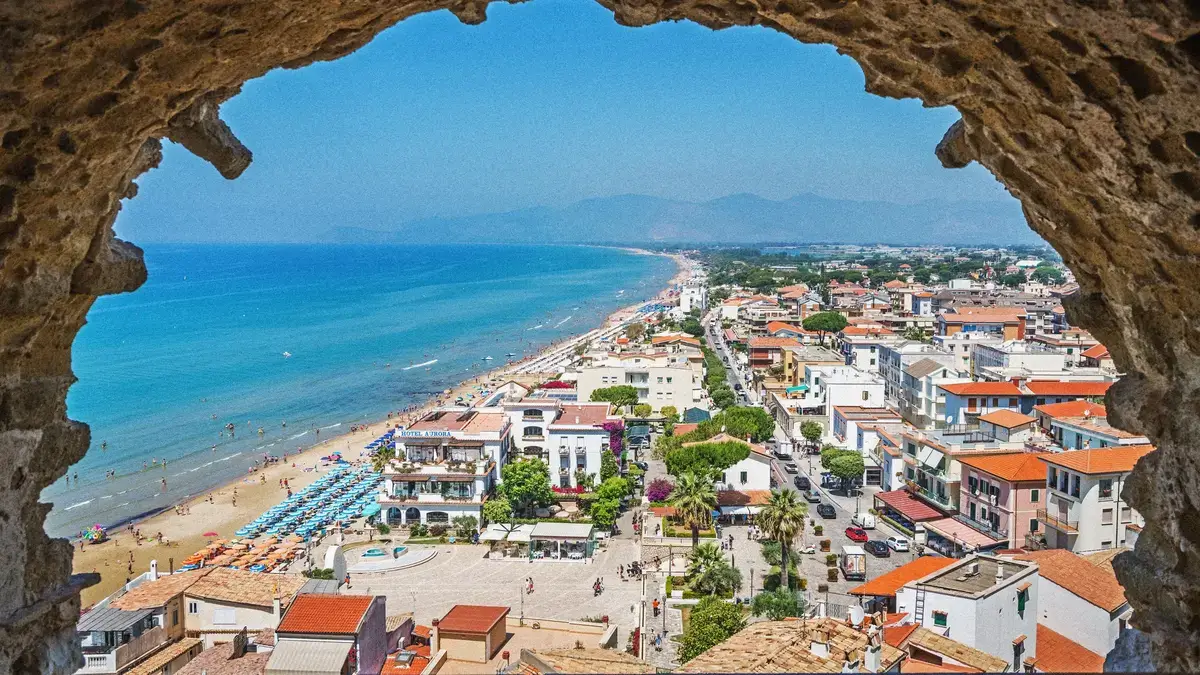
Located just 75 miles south of Rome, the enchanting coastal town of Sperlonga offers visitors a perfect Mediterranean escape with its pristine beaches and crystalline waters.
This former fishing village, perched dramatically on limestone cliffs, features a maze of whitewashed buildings and ancient ruins, including Emperor Tiberius’s seaside villa and its archaeological museum.
Easily accessible by train from Rome’s Termini station, Sperlonga provides an ideal blend of history, culture, and beachside relaxation for day-trippers seeking respite from the capital’s urban intensity.
Why Sperlonga is One of the Best Places to Visit Near Rome by Train
Perched along Italy’s Tyrrhenian coast, the enchanting town of Sperlonga beckons visitors with its pristine white buildings cascading down to crystal-clear Mediterranean waters.
The town’s intimate beaches offer a perfect retreat from Rome’s urban bustle, where travelers can unwind on golden sand shores or explore hidden coves.
History enthusiasts will appreciate the remarkable Tiberius’s Grotto and Archaeological Museum, showcasing ancient Roman sculptures and ruins that once adorned the Emperor’s seaside villa.
A Whitewashed Coastal Town With Crystal-Clear Waters
The whitewashed buildings of Sperlonga cascade down dramatic cliffs to meet the crystal-clear waters of the Tyrrhenian Sea, creating one of Italy’s most picturesque coastal towns.
The untamed beauty of this ancient fishing village offers visitors:
- Pristine beaches with Blue Flag certification
- Hidden grottoes once favored by Roman emperors
- Winding medieval streets free from tourist crowds
This authentic Italian seaside haven beckons those seeking escape from Rome’s intensity.
A Relaxing Beach Day Combined With Roman Ruins
While many visitors flock to Rome’s iconic ruins, Sperlonga offers a rare combination of ancient history and coastal relaxation just 75 miles south of the capital.
This enchanting town features Emperor Tiberius’s grotto-villa complex alongside pristine Mediterranean beaches.
Visitors can explore ancient sculptures and mosaics in the morning, then spend afternoons swimming in turquoise waters or sunbathing on white sandy shores.
Best Things to Do in Sperlonga
Sperlonga’s pristine Mediterranean beaches offer visitors crystal-clear waters and soft golden sand perfect for swimming and soaking up the Italian sun.
History buffs will marvel at the dramatic cliffside ruins of Emperor Tiberius’s seaside villa, complete with ancient sculptures and artifacts discovered in its network of grottoes.
The atmospheric sea caves that once housed Tiberius’s lavish banquets now provide a fascinating glimpse into Roman imperial life while offering shelter from the midday heat.
Swimming and Sunbathing on Sandy Shores
Crystal-clear Mediterranean waters lap against pristine stretches of sandy beach in Sperlonga, making it one of central Italy’s most alluring coastal destinations for swimming and sunbathing.
Visitors can enjoy:
- Private beach clubs with loungers and umbrellas
- Free public beaches with natural grottos
- Calm, shallow waters perfect for families
The expansive shoreline offers both serenity and adventure, with hidden coves and secluded spots for those seeking escape.
Visiting the Villa of Emperor Tiberius and Its Sea Caves
Perched dramatically above the Mediterranean Sea, Emperor Tiberius‘s ancient villa complex stands as one of Sperlonga’s most significant archaeological treasures.
Visitors can explore the impressive ruins, including a natural grotto where the emperor hosted lavish banquets.
The seaside museum houses recovered marble sculptures, while the cave’s crystal-clear waters invite adventurous swimmers to plunge into history.
Viterbo: A Medieval Town With Thermal Baths
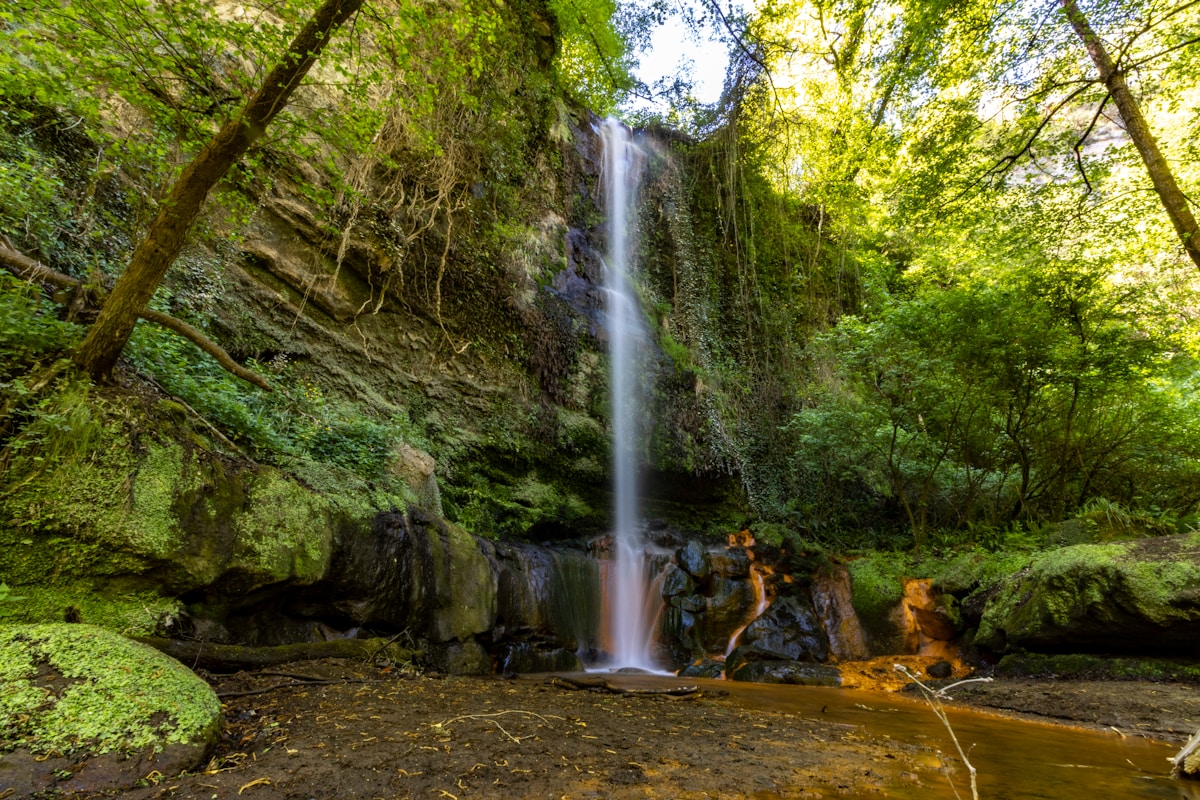
Located just 90 minutes north of Rome, the well-preserved medieval city of Viterbo offers visitors a mesmerizing glimpse into Italy’s rich past with its imposing city walls, magnificent papal palace, and characteristic stone buildings.
The city’s crown jewel is the San Pellegrino quarter, where winding cobblestone streets lead to hidden squares and centuries-old fountains that transport visitors back to the Middle Ages.
Beyond its historical treasures, Viterbo’s natural thermal baths have drawn wellness seekers since ancient Roman times, making it an ideal destination for both cultural exploration and relaxation.
Why Viterbo is One of the Best Easy Day Trips From Rome
Viterbo’s remarkably intact medieval quarter transports visitors back in time with its atmospheric stone archways, ancient fountains, and imposing 13th-century Papal Palace where popes once sought refuge from Rome.
The city’s crown jewel lies in its therapeutic thermal springs, particularly the Terme dei Papi (Papal Baths), where travelers can soak in the same mineral-rich waters that once rejuvenated medieval pilgrims and Renaissance nobility.
Just 90 minutes north of Rome by train, Viterbo offers an authentic glimpse into Lazio’s medieval past while providing modern visitors with both cultural and wellness experiences.
A Well-Preserved Medieval Center With Historic Charm
The historic walls of Viterbo encircle one of Italy’s most splendidly preserved medieval centers, where cobblestone streets and Gothic architecture transport visitors back to the 13th century.
Within the San Pellegrino quarter, travelers discover authentic medieval charm through:
- Perfectly preserved stone arches and ancient fountains
- Original medieval houses with external staircases called “profferli”
- Hidden courtyards adorned with flowering vines and centuries-old wooden doors
Famous for Its Natural Hot Springs and Papal Palace
Natural thermal springs and a grand papal residence make Viterbo a magnet for visitors seeking both relaxation and historical grandeur.
The medieval town’s thermal baths offer therapeutic soaks in mineral-rich waters, while the imposing 13th-century Papal Palace reflects the city’s former role as the papal seat.
Visitors can alternate between unwinding in steaming pools and exploring the palace’s Gothic architecture and frescoed halls.
Things to See and Do in Viterbo
The enchanting San Pellegrino Quarter stands as Viterbo’s best-preserved medieval neighborhood, with its narrow cobblestone streets and weathered stone buildings transporting visitors back to the 13th century.
The district’s atmospheric passages reveal perfectly preserved archways, ancient fountains, and characteristic profferli (external staircases) that exemplify medieval architectural charm.
After exploring the historic center, visitors can unwind in the city’s renowned thermal baths, where the same mineral-rich waters that soothed ancient Romans continue to offer therapeutic benefits in both public pools and luxury spa facilities.
Walking Through the San Pellegrino Quarter
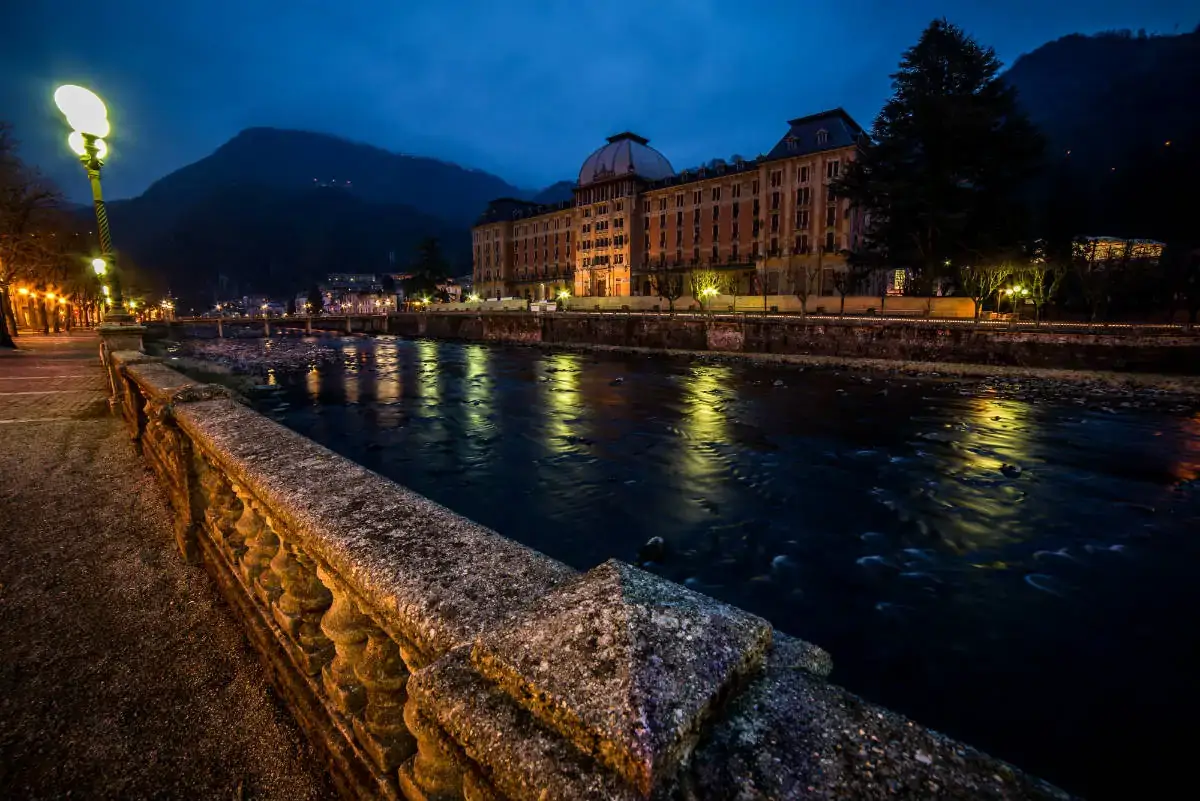
Nestled in Viterbo’s historic heart, San Pellegrino Quarter stands as the most well-preserved medieval district in all of Italy, enchanting visitors with its timeless charm and authenticity.
Wandering through its cobblestone streets reveals:
- Ancient profferlo staircases adorning palazzo facades
- Handcrafted stone archways connecting historic buildings
- Hidden courtyards where artisans still practice traditional crafts
This atmospheric quarter transports visitors back in time, offering an authentic glimpse into Italy’s medieval past.
Relaxing in the Thermal Baths Used Since Roman Times
Ancient thermal waters, bubbling up from deep underground at a therapeutic 58°C (136°F), have drawn visitors to Viterbo’s renowned baths since Etruscan and Roman times.
The geothermal springs at Terme dei Papi offer healing properties in both indoor and outdoor pools.
Visitors can indulge in therapeutic mud treatments, massages, and hydrotherapy while soaking in the same mineral-rich waters that once rejuvenated Roman emperors.
Choosing the Best Day Trip From Rome for Your Interests
Rome’s surrounding region offers distinct day trip experiences tailored to every traveler’s interests and passions.
History enthusiasts can explore the archaeological wonders of Ostia Antica or Cerveteri’s Etruscan necropolis, while food and wine connoisseurs will find paradise in the vineyards of Frascati or the olive groves of Sabina.
Nature lovers seeking tranquility can escape to the pristine beaches of Santa Marinella or hike the verdant trails of Mount Terminillo, each destination offering a perfect counterpoint to Rome’s urban intensity.
Best Rome Day Trips for History and Archaeology Lovers
History enthusiasts seeking ancient wonders near Rome have three exceptional archaeological sites to explore: the remarkably preserved ruins of Pompeii, the lesser-known but equally fascinating Ostia Antica, and the magnificent ancient villas of Tivoli.
While Pompeii offers an unparalleled glimpse into Roman life frozen in time by Mount Vesuvius’s eruption, Ostia Antica presents Rome’s ancient port city with intact streets, theaters, and homes that rival Pompeii’s authenticity.
The UNESCO-listed Villa Adriana and Villa d’Este in Tivoli showcase the grandeur of Roman imperial architecture and Renaissance innovation, making them essential stops for visitors passionate about classical civilization.
Pompeii, Ostia Antica, and Tivoli’s Ancient Villas
For archaeology enthusiasts and history buffs visiting Rome, three remarkable ancient sites stand out as must-see day trip destinations: Pompeii, Ostia Antica, and Tivoli’s magnificent villas.
These archaeological wonders offer unparalleled glimpses into Roman life, each with distinct features:
- Pompeii: Perfectly preserved streets and buildings frozen in time by Mount Vesuvius.
- Ostia Antica: Rome’s ancient port city with intact theaters and mosaics.
- Tivoli’s Villas: Hadrian’s Villa and Villa d’Este’s opulent gardens.
Best Day Trip From Rome for Food and Wine Enthusiasts
Food and wine connoisseurs seeking culinary adventures beyond Rome’s borders will discover extraordinary gastronomic destinations in Naples, Frascati, and Orvieto.
Naples beckons with its authentic Neapolitan pizza and fresh seafood, while the hillside town of Frascati entices visitors with its renowned white wines and rustic osterie serving local specialties.
In Orvieto, travelers can savor Umbrian delicacies like wild boar, black truffles, and the region’s distinctive white wines while exploring the town’s medieval wine cellars.
Naples, Frascati, and Orvieto’s Culinary Delights
Passionate culinary enthusiasts seeking unforgettable flavors near Rome will discover three distinctive destinations that showcase Italy’s remarkable food and wine heritage.
- Naples dazzles with authentic Neapolitan pizza, fresh seafood, and espresso culture.
- Frascati entices with historic wine cellars and traditional porchetta.
- Orvieto delights with truffle-based dishes and crisp white wines from ancient caves.
Each destination offers immersive tastings and local specialties, perfect for adventurous palates seeking authentic regional flavors.
Best Places to Visit Near Rome for Nature and Relaxation
The tranquil hills of Castelli Romani offer a perfect escape from Rome’s urban bustle, with their serene lakes, ancient villages, and invigorating mountain air.
Nature lovers can unwind on Sperlonga’s pristine beaches, where crystalline waters and dramatic limestone cliffs create a Mediterranean paradise just two hours from the capital.
For ultimate relaxation, Viterbo’s thermal baths invite visitors to soak in mineral-rich waters that have soothed weary travelers since ancient Roman times.
Castelli Romani, Sperlonga, and Viterbo’s Thermal Baths
Seeking respite from Rome’s urban bustle, travelers can discover serene natural escapes within easy reach of the city.
The Castelli Romani region offers lush volcanic lakes and historic wine towns, while Sperlonga’s pristine beaches provide Mediterranean tranquility.
Essential natural retreats include:
- Lake Albano’s crystal-clear waters in Castel Gandolfo
- Sperlonga’s white-sand beaches and ancient grottoes
- Viterbo’s therapeutic thermal springs, dating back to Etruscan times
Wrapping Up: Find Your Best Day Trips from Rome
Thanks to its prime location, Rome is the perfect place to start exploring Italy’s hidden treasures. Each year, over 5 million visitors set out on day trips to nearby gems.
From the flowing fountains of Tivoli’s Villa d’Este to the sunlit ruins of Ostia Antica, every outing offers a unique peek into Italy’s vibrant tapestry of history, culture, and natural beauty.
These carefully selected spots promise unforgettable experiences just beyond the Eternal City’s borders.
Frequently Asked Questions (FAQs)
What are some of the top day trips from Rome?
There are so many awesome options! You can explore Tuscany, visit the Amalfi Coast, check out Assisi, or take a train ride to Pisa. Each of these places offers a unique vibe and unforgettable experiences!
How can I get to the Amalfi Coast from Rome?
You can take a train from Rome to Naples, and then hop on a bus or ferry to get to the Amalfi Coast. It’s a bit of a journey, but totally worth it for the stunning views and charming towns like Positano and Sorrento!
Is a day trip to Pompeii really worth it?
Absolutely! A trip to Pompeii is one of the 12 best day trips from Rome. The city of ancient Rome is fascinating, and walking through the ruins gives you a peek into history like no other. Plus, it’s just a train ride from Rome!
How do I plan a trip to Pisa from Rome?
It’s super easy! You just need to take the train from Rome to Pisa. The train ride is quick, and once you get there, you can check out the iconic Leaning Tower and enjoy some gelato. It’s a fun day away from Rome!
Can you recommend a good excursion to Tuscany?
For sure! You can book a guided tour that includes wine tasting and visits to charming towns like Siena and San Gimignano. Exploring Tuscany is one of the best ways to experience the heart of Italy!
What’s the best way to explore the Amalfi Coast from Rome?
The best way is to take a train to Naples and then either a bus or ferry to the Amalfi Coast. You can also join a guided day trip that includes stops at popular spots like Sorrento and Positano, which makes for an unforgettable day!
How far is Assisi from Rome?
Assisi is about a 2.5-hour train ride from Rome, making it a perfect day trip! The town is famous for its beautiful basilica and stunning views, so it’s definitely worth the trip!
What should I not miss on a day trip to the Bay of Naples?
Make sure to visit the charming towns of Sorrento and Positano. You can also explore the beaches and enjoy delicious local cuisine. It’s a fun day to soak up the sun and relax by the sea!
Are there any organized tours for day trips from Rome?
Yes, there are tons of organized tours available! They usually include transportation and a guide, which makes it easier to enjoy places like Pompeii or the Amalfi Coast without worrying about the details.
What’s the best time of year for day trips outside of Rome?
Spring (April to June) and fall (September to October) are the best times! The weather is pleasant, and you can avoid the summer tourist crowds. Perfect for exploring the beautiful regions of Italy!

